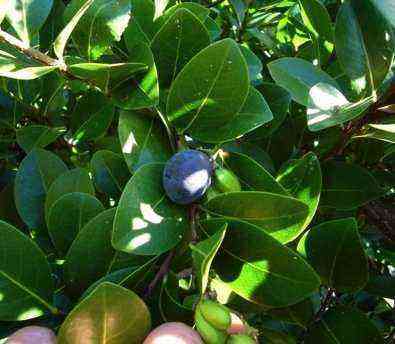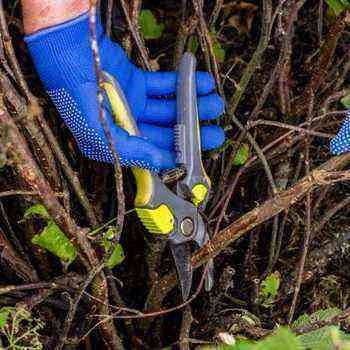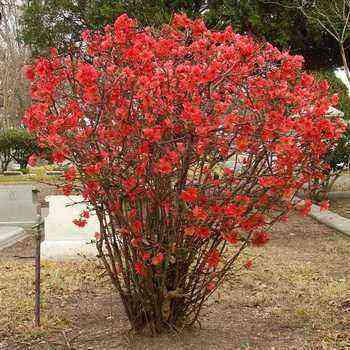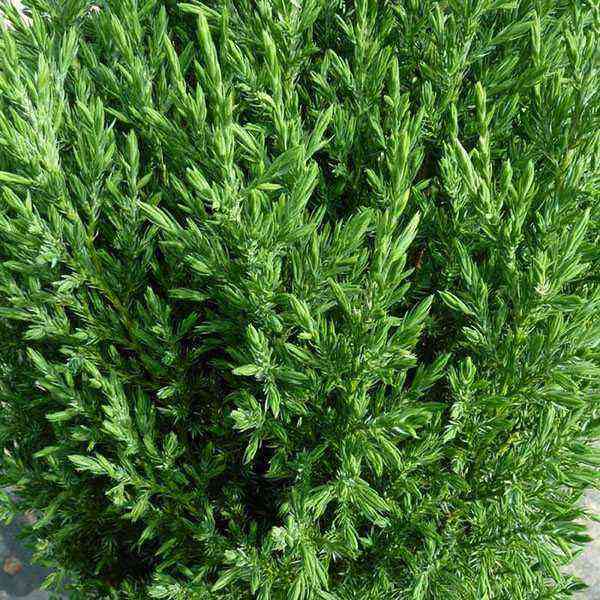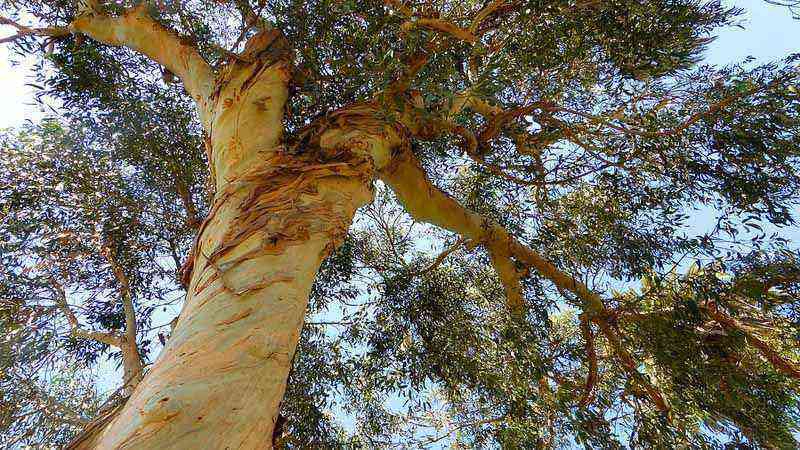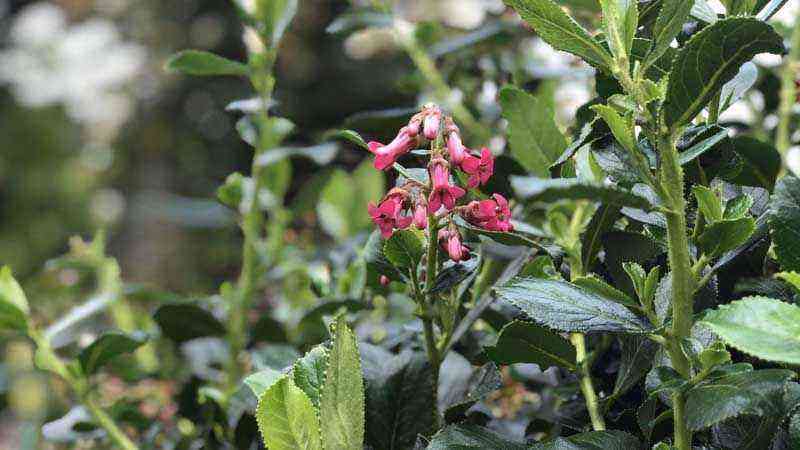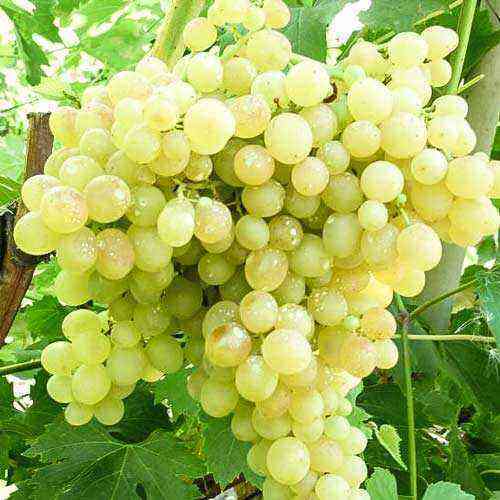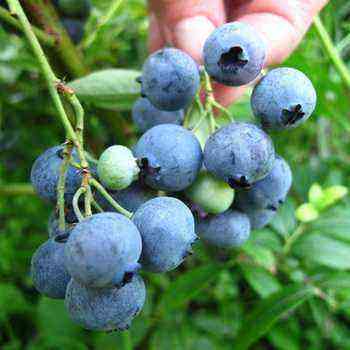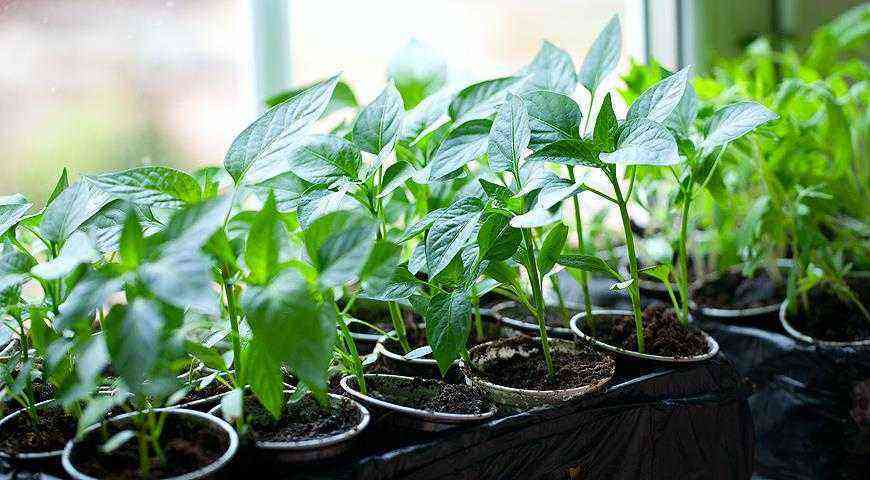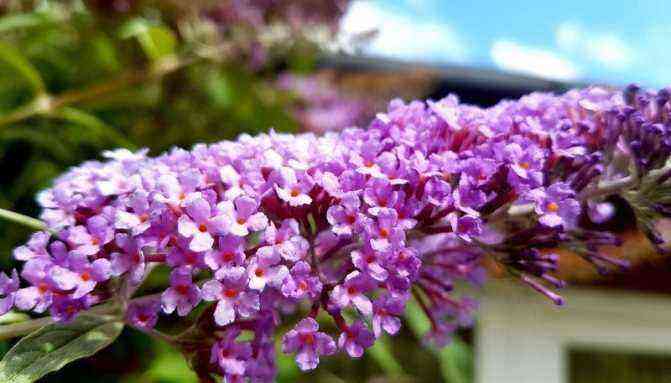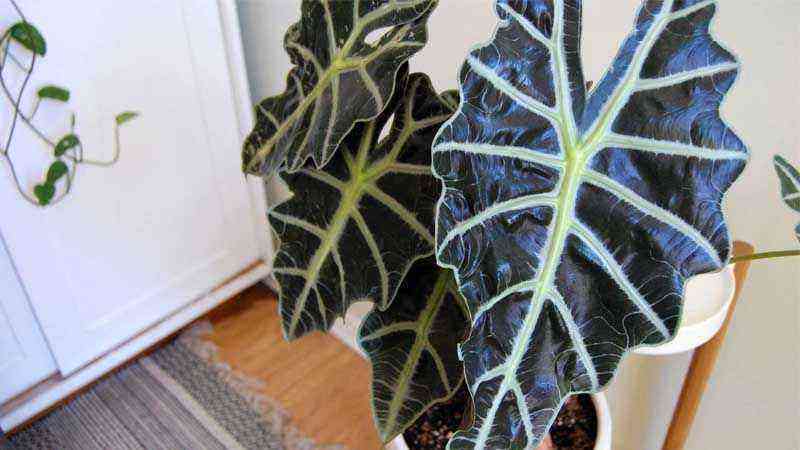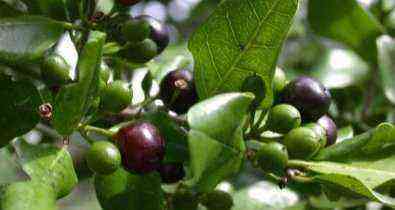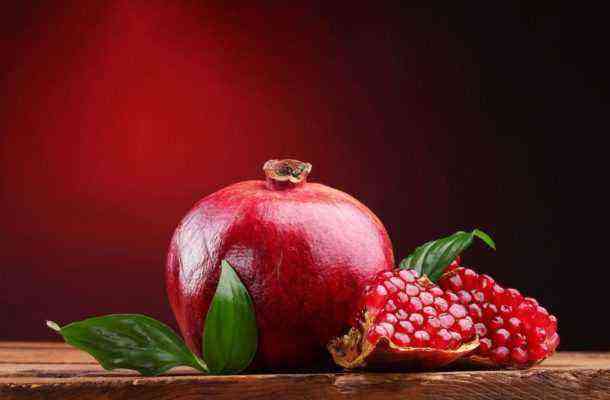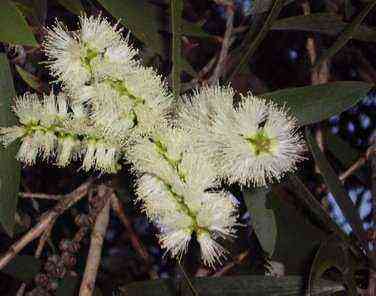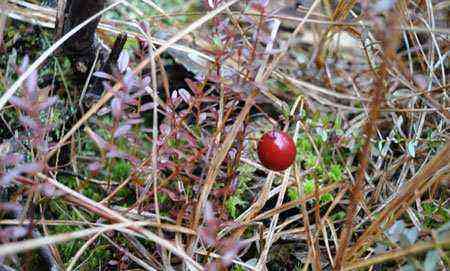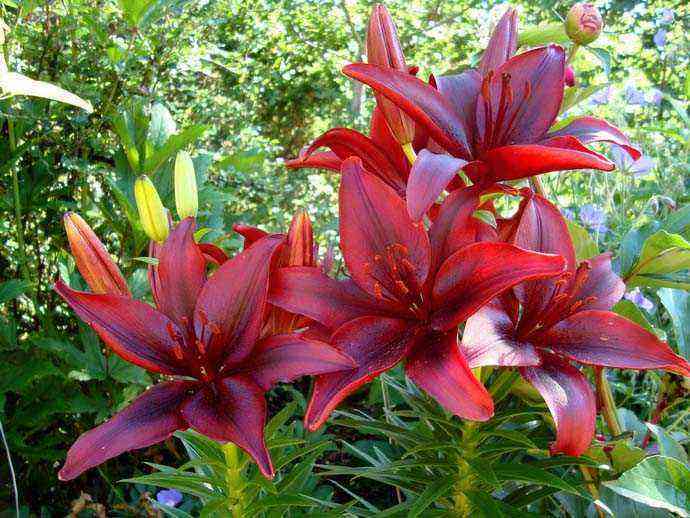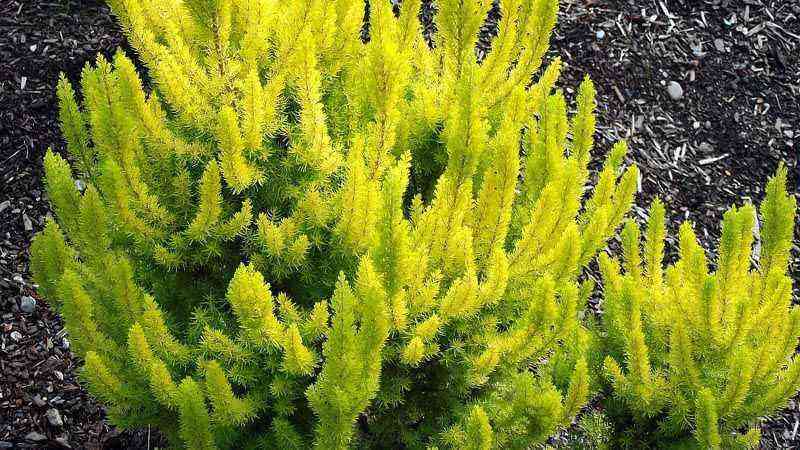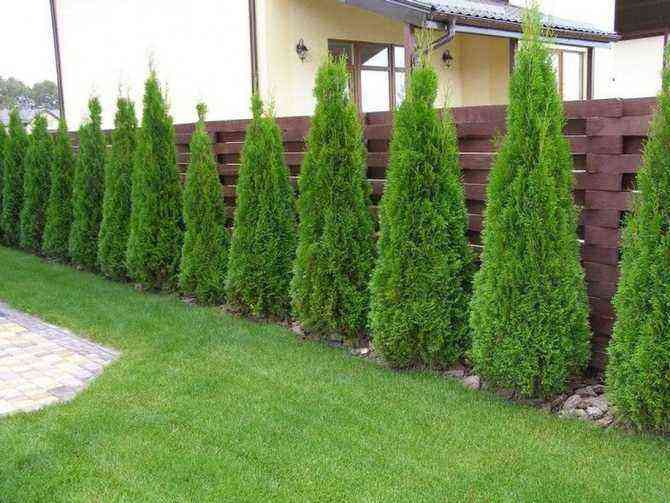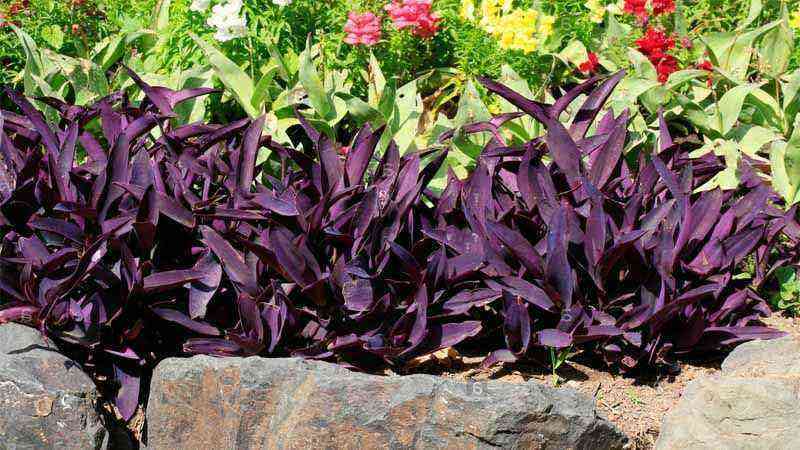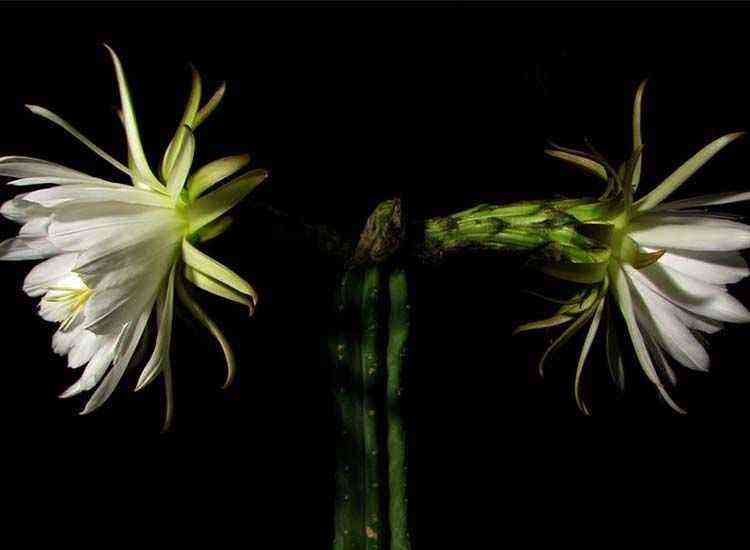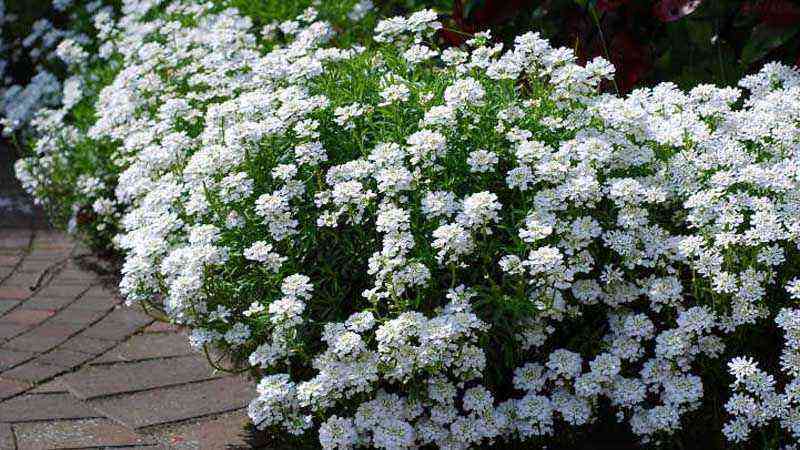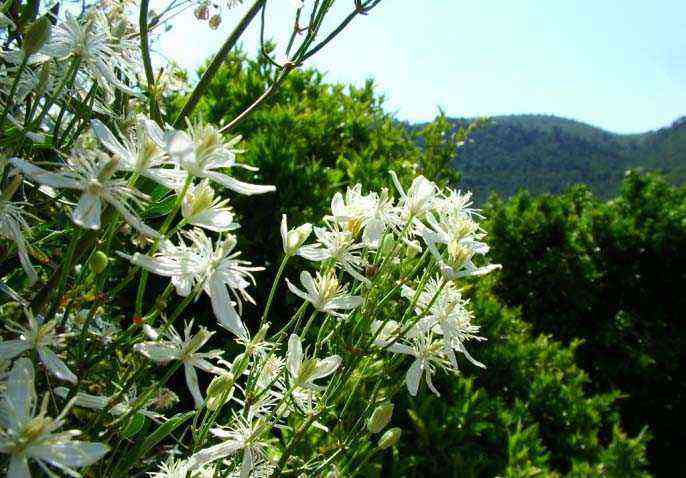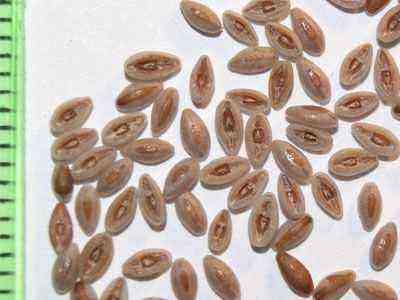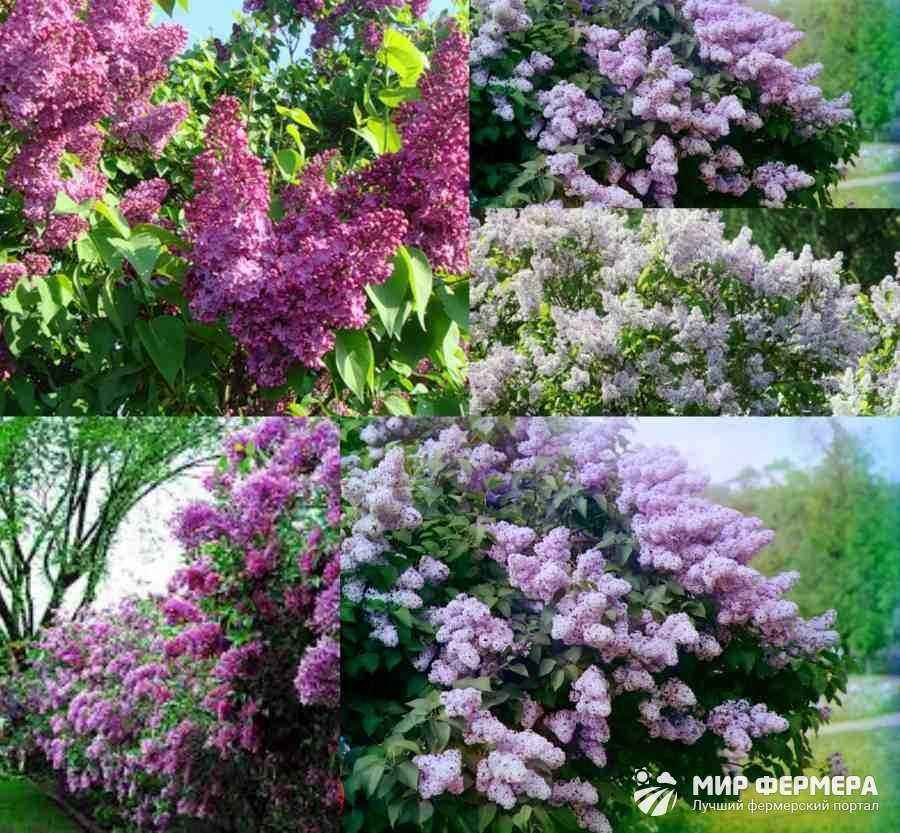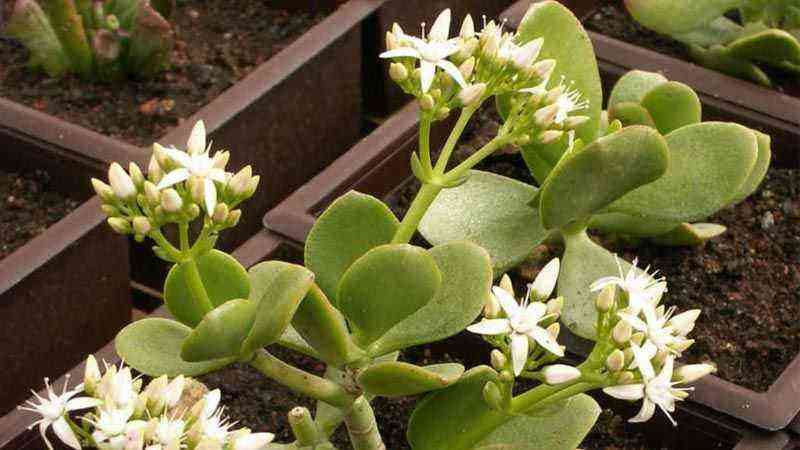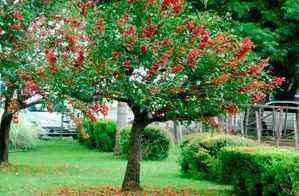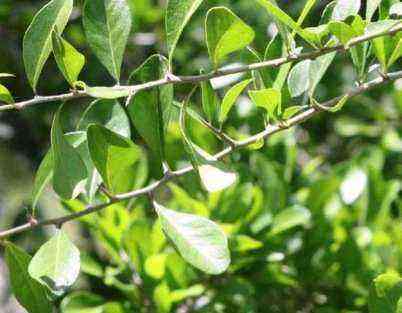Posted by NataliaCategory: Garden Plants Published: February 18, 2019 Updated: January 08, 2020
Sheep (lat.Helictotrichon) – a genus of herbaceous perennials of the Myatlikovye family, or Cereals, including, according to various sources, from 40 to 90 species. The scientific name of the genus comes from two Greek words that translate as “twisted hair” and describe the characteristic of the plant – the flower scales twisted in the lower part of the awn. Plants of this genus are distributed almost throughout Eurasia, with the exception of areas with a tropical climate, as well as in North and South Africa. In the African and Asian tropics, they grow in the highlands.
All species are fodder grazing plants, but due to the stiffness of the leaves as feed for livestock, they did not gain popularity. However, the species of the genus evergreen oats, or white oats, or viviparous oats (lat.Helictotrichon sempervirens = Avena candida = Avena sempervirens), originating from the Alps and the Western Mediterranean, where it grows at an altitude of 2400 m above sea level, is widely used in culture as decorative cereal.
Description of the plant
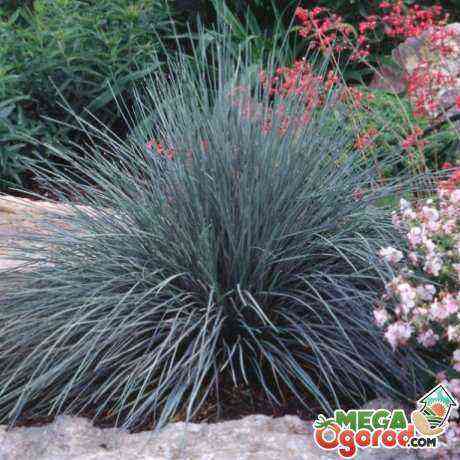
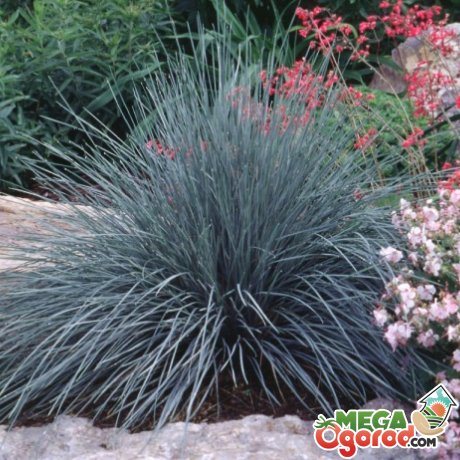
Evergreen sheep is a perennial cereal plant of the Myatlikov family. The scientific name is Heliktotrikhon, the folk name is desert sheep, viviparous. Schell’s sheep is also him. It grows as a bush. If the plant is not planted, it can grow as tussocks.
On suitable soil, the width of the bush reaches 1 m.
- The root of the evergreen is fibrous. It penetrates deeply into the soil, supplying moisture and nutrients to the terrestrial part of the plant.
- The length of the leaves reaches half a meter. Some needle-like leaves are curled or folded lengthwise. The color of the leaves is gray or greenish blue.
- Sheep blooms with whitish or gray-green soft panicles, which appear in July. The height of the inflorescence stem reaches 1 meter. The inflorescences are unpretentious, they visually make the bush taller and more airy.
The stems of the evergreen sheep are straight, the leaves are narrow, linear, the width in the lower part is about 1 cm. At the top, they evenly taper and end with a sharp end.
The plant is widespread in Europe, Asia, Africa. It often grows in the mountains. The Alps and the Western Mediterranean are called its homeland. Wild species are used as livestock feed. But it cannot be called a very useful forage crop. More evergreen sheep are used as an ornamental cereal.
In the southern regions, it is an evergreen plant, its leaves do not lose their attractiveness all year round. In mid-latitudes, under the influence of frost and snow, its leaves wilt in winter, although they do not dry out.
- Pendula, the stem of which reaches 1,5 m. At the end of the stem, there is a heavy drooping inflorescence. Leaves combine gray, green, blue shades.
- Saphir Sprudel is distinguished by its bright gray leaves with a blue tint. Its silvery shiny inflorescences are especially beautiful.
- Robust will not rust even in the most extreme weather conditions.
Ornamental varieties of oat look difficult to separate from each other by leaves.
Varieties
In nature, there are about 50 wild oat varieties. Among the ornamental varieties, the choice for gardeners is much less. The most common species are Pendula, Saphir Sprudel, Robust. Outwardly, they are similar to each other, and only an experienced gardener can distinguish one variety from another.
Popular: Graceful, easy-care conifers in garden plots
Pendulum
This is a tall sheep, which reaches one and a half meters in height. The leaves combine several shades. Among them are gray, blue and green. The variety has heavy inflorescences that make the plants sag under their weight.
Овсец Saphir Sprudel
This type of cereal has gray long leaves with a blue tint. Flowers are collected in inflorescences and have a silvery sheen.

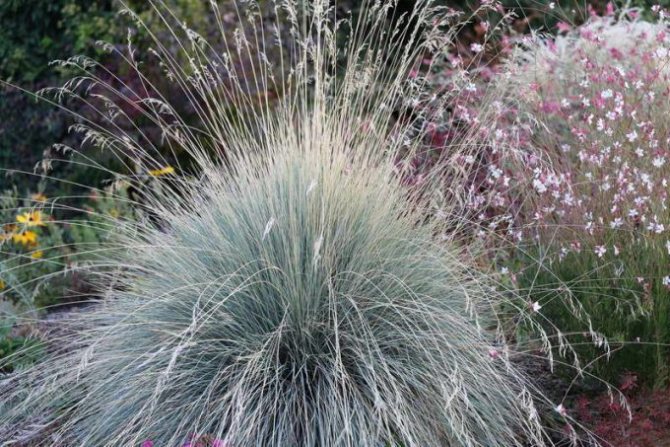
Robust
This sheep is distinguished from the rest by its special resistance to rust damage. Robust is not susceptible to illness even in extreme weather.
Reproduction
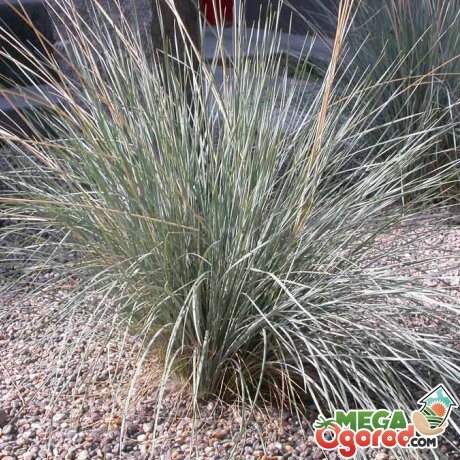
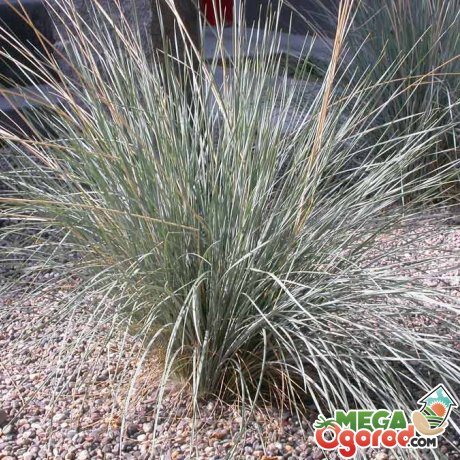
Basically, sheep are propagated by dividing the bush. It is better to do this in the spring, because during the autumn transplant, the bushes often get wet and may even disappear. The bush is watered, carefully dug out, divided into parts. If the roots are damaged at the same time, this is not a problem. It is even allowed to cut off the lower part of the root. The rest is washed in water, divided into pieces and planted separately.
If the soil in the new place is light and loose, sufficiently moist, they quickly form roots and form a new bush. You can cut off part of the bush with a sharp shovel and move it to another place. In this case, there is a slight risk of rotting damaged roots in the part of the plant that remains in the ground.
Evergreen ewes can be grown from seeds.
They are harvested in the fall after ripening. Seeds are sown in open ground to a depth of 2 cm. Make sure that the soil on the site does not dry out. If the area where they are sown is not trampled, the seeds will sprout. Care should be taken to ensure that weak young plants do not drown out the weeds. When they grow up and get stronger, caring for them is reduced to periodic examinations. Seeds can be neither harvested nor sown. They are scattered around the bush and some of them sprout. You can wait until the young bushes grow up, then transplant them to a new place.
If evergreen sheep are grown for seedlings, it is better to do it directly in pots. If transplanted incorrectly, the weak root is injured, which can lead to the death of the plant. You cannot pull out a thin plant, pull it by the ground part. Therefore, it is necessary to plant seedlings by transshipment. The sheep are watered, pass the inside of the pot with the back of the knife, separating the soil from the walls. Turn the pot on its side, carefully remove the soil along with the plant and plant it in a permanent place.
Planting and reproduction
Planting sedge in open ground is very simple – anyone can handle it. The work progress will be as follows:
- Small grooves are made in the heated soil. Their depth may differ depending on the size of the planting material – 3 cm is enough for achenes, and for seedlings they are taken deeper, with a margin for the growth of rhizomes.
Important: Clay pots are suitable as containers – plastic may be too toxic for young sprouts.
- Having slightly moistened the holes, you can fill them with a thin (0,7-1 cm) layer of sand or peat.
- After that, the seedlings or seeds are placed in the groove and sprinkled with earth, not forgetting to tamp and moisten it tightly.
The planting scheme provides for an interval between young seedlings of 25-30 cm. For older specimens, this gap is increased.
This procedure is carried out in late April or early May, when there is no risk of repeated frosts.
Some also practice pre-planting, which implies seed propagation. It’s more complicated here:
- At the end of February or early March, a spacious pot is taken. It is filled with a mixture of leafy and soddy soil, humus, peat and fine river sand (all this is added in equal proportions). In order for such a substrate to “breathe”, a little coal is also added.
- At the same time, the achenes are placed in boiled water for 12 hours (swamp varieties will take a day). The water in these “baths” is changed every 2 hours.
- After these manipulations, the seeds are spread on the soil and sprinkled with a thin (0,5-0,7 cm) layer.
- The pot itself is immediately covered with glass or foil. They should not touch the ground. It is placed on a battery or boiler – bottom heating and constant + 22 ° C are required.
Did you know? If we compare the appearance of the noble estates of the early twentieth century with the current “canons” of landscape design, then we will find almost complete coincidence. The combination of utilitarian and decorative species with an obligatory pond was still considered a sign of good taste.
- The substrate is kept moist, until the emergence of shoots, a spray bottle is used for such purposes – “direct” pouring is still prohibited.
- Periodically, the seeds are ventilated by removing the film for 1-2 hours. This will keep them from rotting.
- The sprouts can “fight back” in a month or two. The grass that has gone into growth must be dived, placing it in another container. By the beginning of May, the roots will get stronger, and the transplantation to the site will be successful.
Cultivation
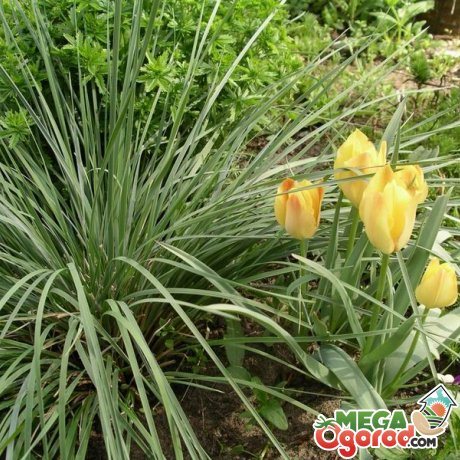

Sheep grows well on dry, loose, light soils. Nutrients are optional. On the contrary, if evergreen sheep are planted in fertile soil, and even placed in the shade, its leaves will turn green.
Evergreen frost and drought tolerate well.
On heavy soils, sheep grows poorly, especially when they are flooded with water. In this case, the root system of the plant rots, as a result of which the plant disappears.
No more than four plants are planted per square meter. Planting density depends on the purpose of the bushes. If a hedge is formed, they are planted closer to each other, at a distance of 50 cm from each other. Sometimes oats are planted alone, near flowers or shrubs of another species. If the soil is heavy, sand and gravel are added. They will serve as drainage for the evergreen sheep during rain or flooding.
Care instructions
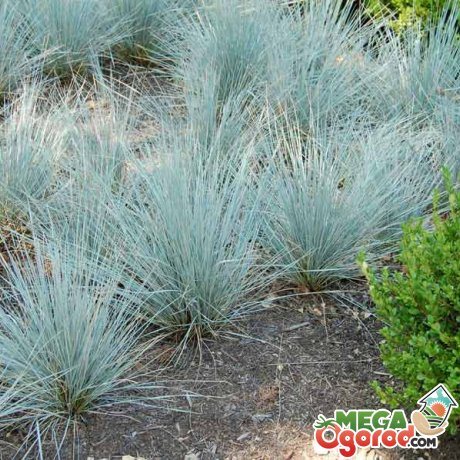

Evergreen sheep feels good in conditions close to the climate of the mountains. Does not like combinations of high temperatures with high humidity. In this case, it does not bloom well, in August the risk of rust increases, which will damage its decorative leaves.
A sheep grows in one place for about three years. Then it grows into a wide clump and seems unkempt. In the fourth year, the bush must be divided into parts and planted so that it does not lose its decorative effect. After the panicles have faded and lost their decorative appearance, they are cut off.
Application
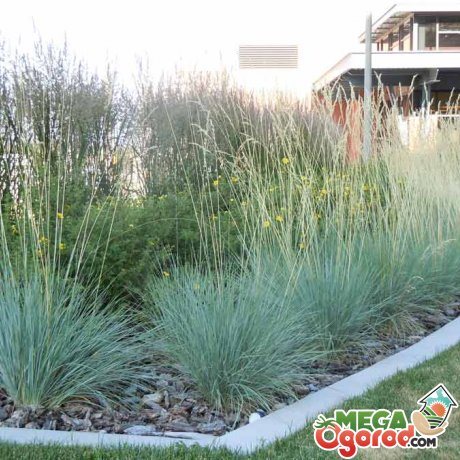

The reason for the popularity of evergreen sheep is unpretentiousness to growing conditions, decorative type of bush throughout the year, resistance to drought, winds, frosts, and rains. It can beautify areas with poor soil, where other flowers and shrubs do not grow.
Where and how the plant can be used:
- Evergreen oat is especially beautiful in an autumn garden, when most of the flowers have already dried up. He can decorate the site even in winter, until it is covered with snow.
- Blue-gray leaves and oat inflorescences look great in rockeries, mixborders, against the background of variegated shrubs and trees. They sway in the wind, giving the composition volume, lightness and dynamics.
- Sheep looks original on alpine slides, near artificial and natural reservoirs. It is used in monoclumba with other cereals, especially those that change the foliage color to yellow or red in autumn. You can create an entire cereal garden by choosing neighboring plants of different heights, colors and leaf shapes.
- From the bushes of evergreen sheep, you can form a hedge. It will look spectacular, and it will not require special care. It doesn’t need to be cut like a bush hedge.
Bells, phlox, saxifrage, irises will be good partners for the sheep. It does not shade flowers, but only emphasizes their beauty.
More information can be found in the video:
The uncomplicated appearance of ornamental cereals makes them versatile in landscape design. Most often they are used to decorate alpine slides, rabatoks, mixborders. They even create special gardens from the Zlakovy – a spectacle similar to the natural steppe. Sheep will definitely become a spectacular accent of any composition thanks to its bluish tint.
Heliktotrichon (scientific name) is a perennial evergreen herb of the Cereals family. People call it viviparous oat.
Country cottage area
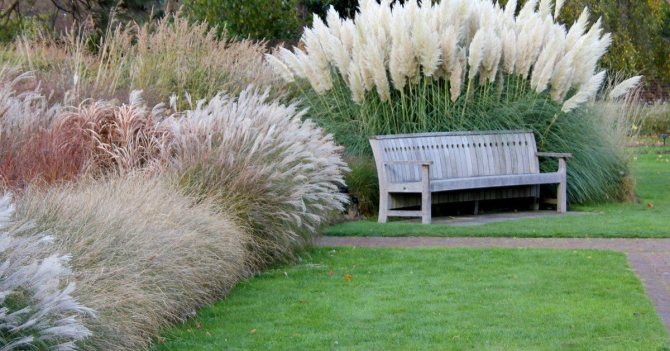
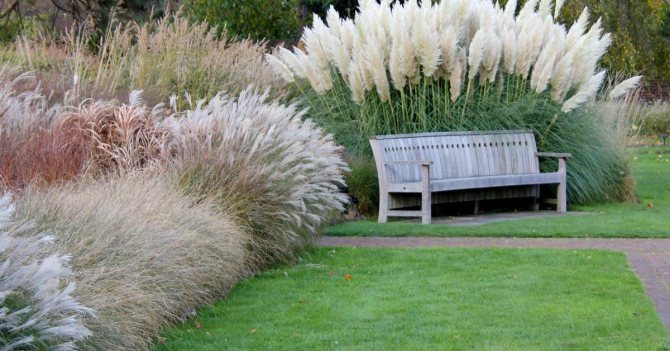
Despite the lack of flowers, ornamental grasses, sedges and grasses in the garden are irreplaceable – they favorably set off the splendor of flowering plants, give the site a decorative look and can serve as an excellent background supplement for bright accents. Most of such crops do not require annual renewal, since they are perennial and successfully survive adverse conditions even in the most severe winters.
Plants with narrow gramineous leaves (sedges, grasses, liliaceae) belong to different families, but the external similarity allows, without going into botanical subtleties, to call them ornamental grasses.
On this page you can find photos, names and descriptions of sedges, cereals and other ornamental herbs for decorating the garden.
Types of perennial ornamental grasses and herbs in landscape design
Ophiopogon planiscapus Is truly a royal plant. The variety ‘Nigrescens’ with black leaves strikes with an exotic appearance. If you place a decorative ball near the bush, this grass will resemble a porcupine with long games.
Pay attention to the photo – in this perennial ornamental herb for the garden, the leaves retain their color even in partial shade:

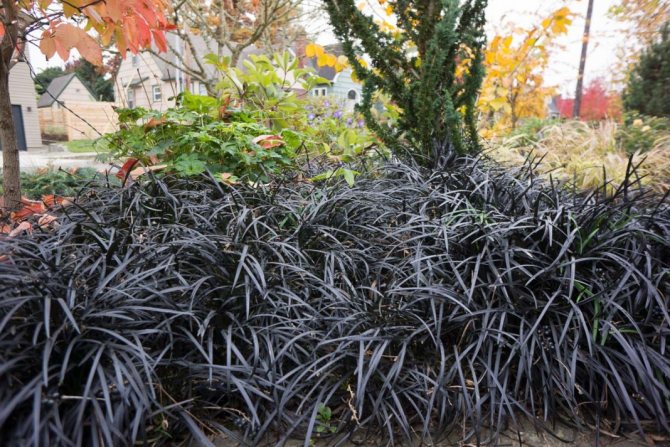
Ophiopogon blooms in August-September. The spectacle is magnificent – as if a lilac lily of the valley happened to be among the black sedge. It is easy to propagate the plant: after taking root, the “black grass” begins to grow with the help of underground stolons and, accordingly, form new bumps.
Do not forget that ophiopogon comes from regions with a milder climate and can freeze out in severe winters without snow. Mulch and shelter made from bark or fallen leaves will come in handy. You cannot cut the leaves of ophiopogon for the winter. It is an evergreen plant.
Another fashionable plant – мискантус (Miscanthus)… New varieties appear every year.

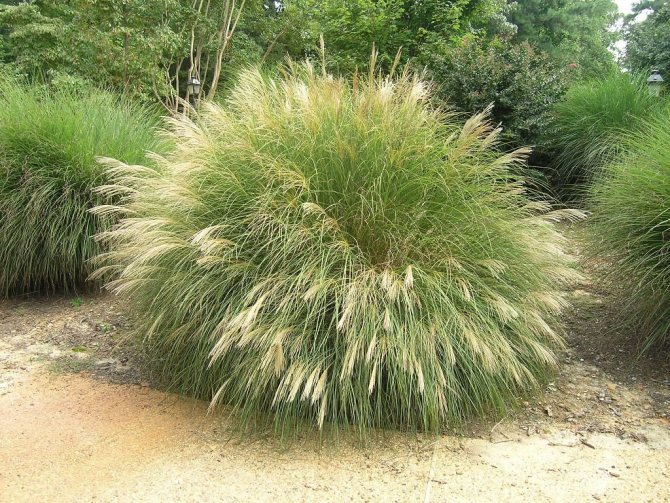
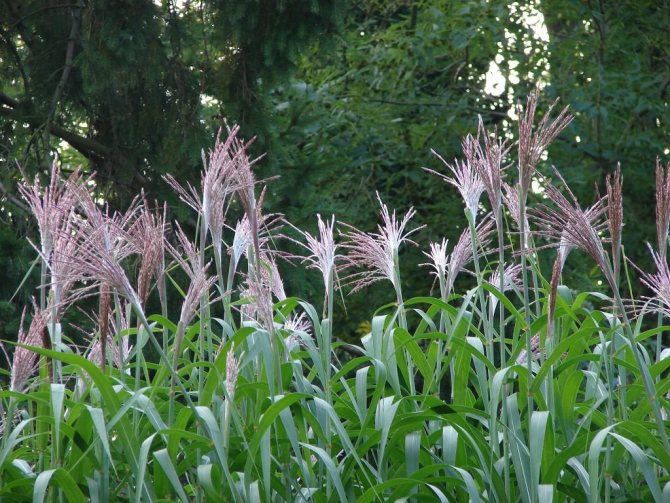
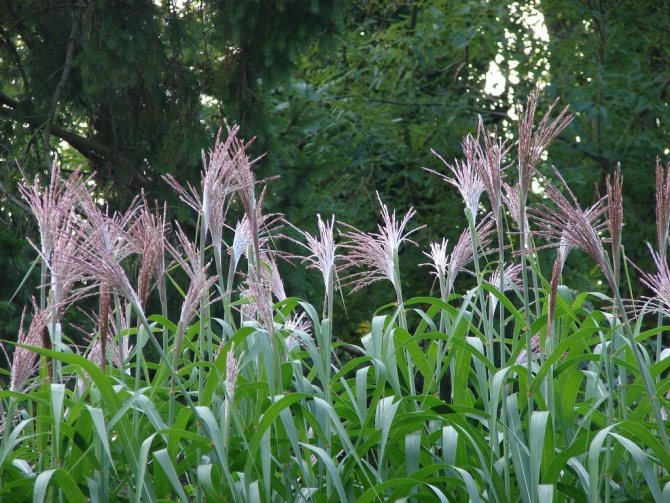
Chinese miscanthus (M. sinensis) pleases with a special variety. This type of ornamental grasses forms powerful multi-stem shrubs from 40 cm to 2 m in height. The leaves are beautifully colored – can be bluish-green, with transverse or longitudinal bright stripes. The flowering of miscanthus is very impressive. But in our climate, elegant fluffy panicles can only be seen in ‘Early Hybrids’. Other varieties lack the growing season for full flowering.
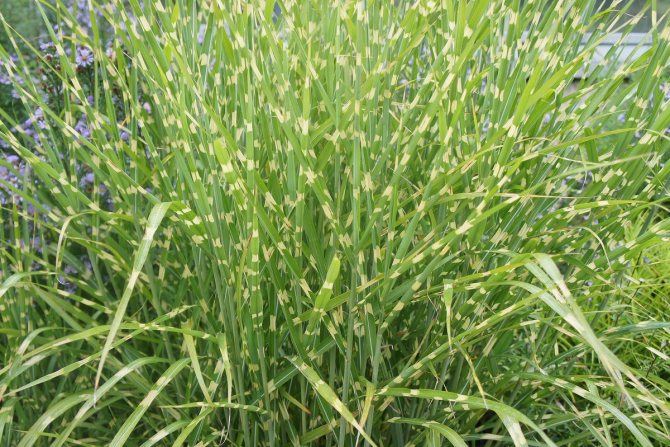

Miscanthuses can grow in the sun or in partial shade, they like loose nutritious soils. Occasionally they need to be fed.
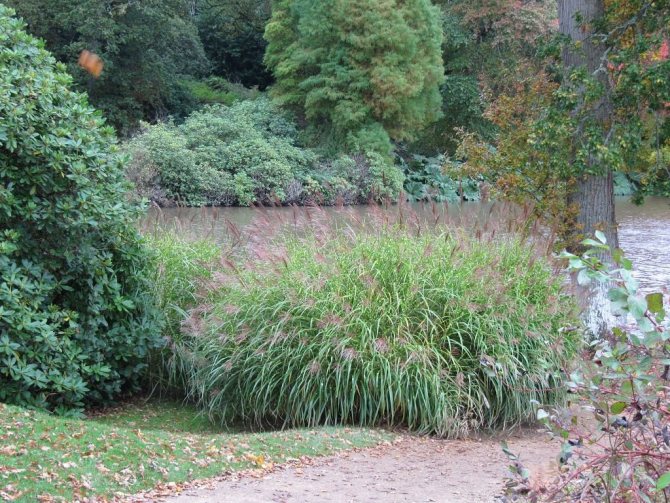
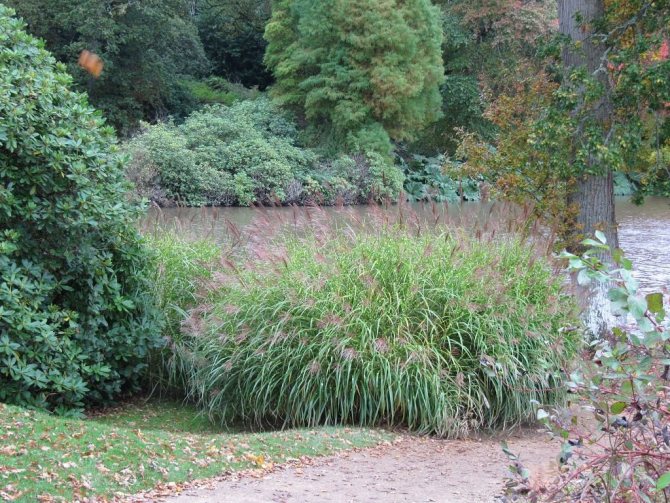
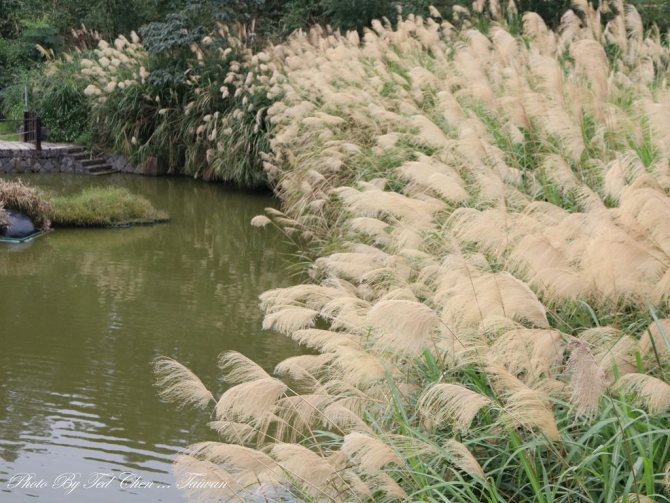
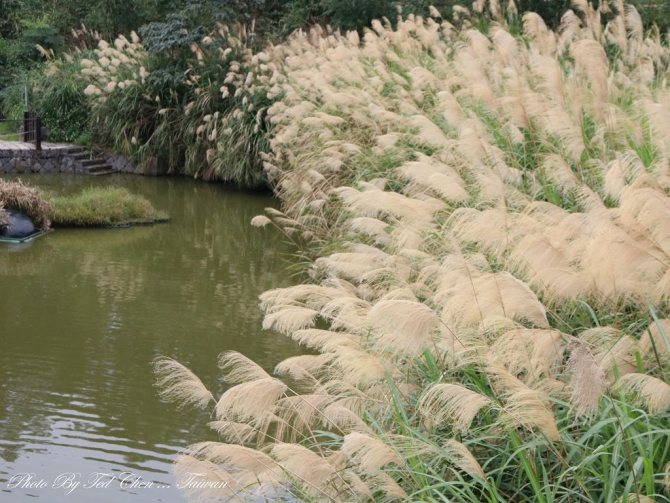
Beautiful photographs taken in overseas gardens bring an Asian cereal with an unpronounceable name into vogue. Hakonechloa large (Hakonechloa macra).


Curtains with such decorative grasses and herbs in landscape design, thanks to drooping leaves, look simply amazing. Especially effective are yellow-leaved and variegated varieties.
In the gardens of the middle lane, haakonehloe, which is called the weeping grass because of drooping leaves in Japan, lacks warmth: lush bumps do not work. In the harsh snowless winters, hakonekhloya freezes out. It can only be recommended for cultivation in the southern regions. The plant is planted in shady, humid places.
But рейграс (Arrhenatherum) tall bulbous subspecies ‘Variegatum’ (A. elatius ssp. bulbosum ‘Variegatum’) and winters and grows well with us.
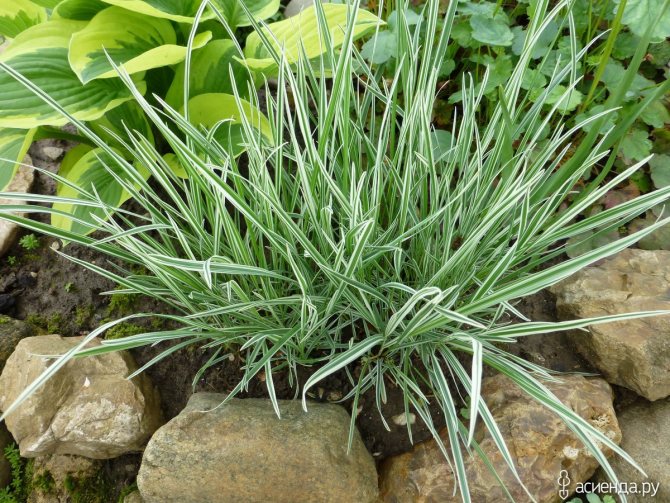
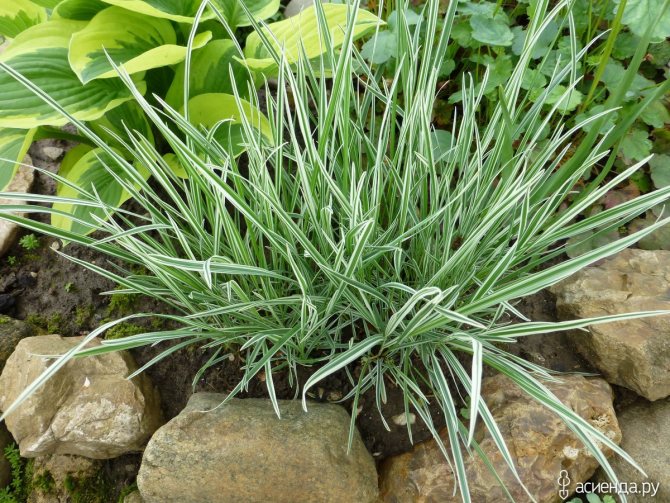
It forms delicate loose bushes with very bright contrasting foliage. Bulbs are formed in the stalks, which fall on the soil and give life to new plants. This ornamental grass is ideal for landscaping: Reygrass is non-aggressive, indifferent to drought, looks better in the sun, where it gets brighter.
Nowadays, cereals with gray foliage are very popular. The first among them – evergreen oats (Elelictotrichon sempervirens).

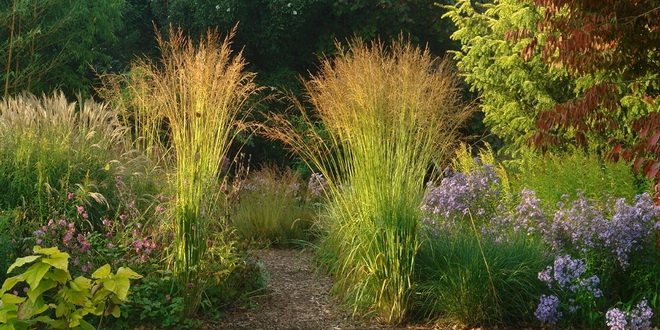
Forms charming bluish-blue bushes up to the knee. Loves the sun (in full light it acquires a bright color), light soils and relative dryness.
His “younger sister” – sizzling oatmeal (Festuca glauca).


Fescue leaves are thin as needles. A neat bump with brightly colored leaves is formed only when planted in a sunny place, in dry, well-drained soil. In frosty and damp winters, the plant may die….
Щучка дернистая (Deschampsia caespitosa) – a simple, unpretentious plant.
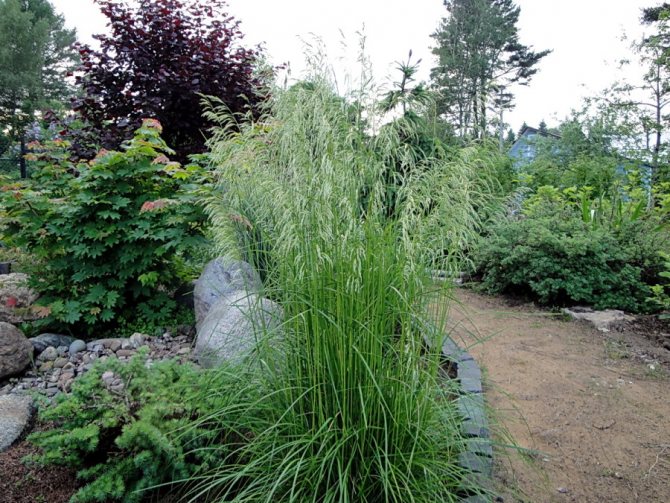
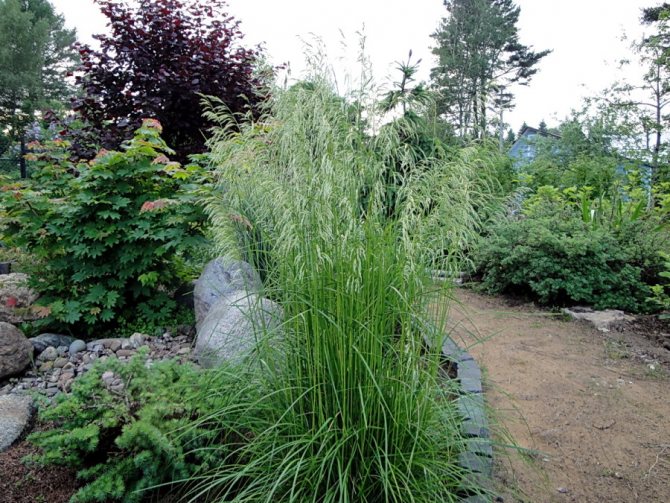
At first glance, nothing special. However, this ornamental grass is very good at design among the stones on the side of the pond. It forms neat, rounded bushes. Recently, varieties with different coloration of spikelets have appeared….
Very popular blue lightning ‘Variegata’ (Molinia caerulea ‘Variegata’)… Its bluish leaves with longitudinal white stripes are brighter in the sun. But in the shade, the lightning grows pretty well and pleases the eye. Loves moisture and coolness. Otherwise, no problem.

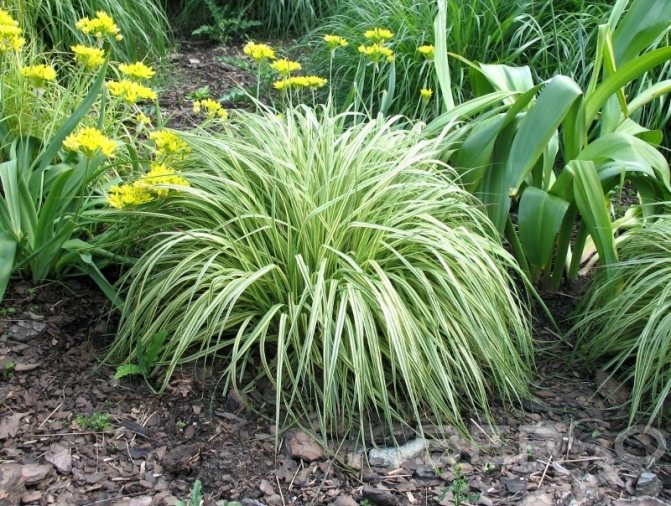
As you can see in the photo, these ornamental grasses and cereals for the garden can be planted next to roses, geyher, geraniums, hosts, badans, aquilegia and cuffs:

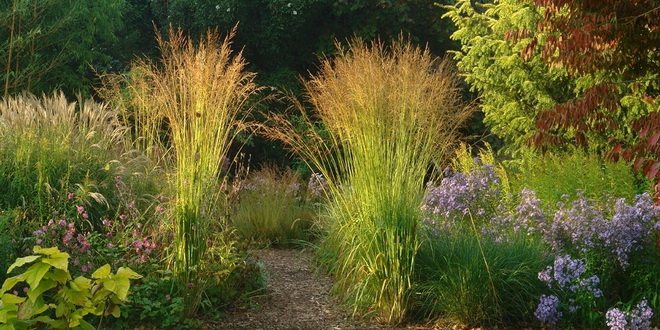
All these plants will get along well together. It is also a good plant for planting spring bulbs.
Chinese miscanthus winter well. You just need to remember that it is better not to cut them for the winter. In the spring, they wake up late, which makes it seem that the plant is inanimate.
Types and varieties of decorative sedges in landscape design (with photo)
Decorative osoki (Sageh) are remarkable for their plasticity. They perfectly adapt to different conditions and feel comfortable in almost all gardens: they grow in the sun (just remember about watering) and in the shade, both in dry and damp areas. There are variegated and yellow-leaved sedges. Look at the photo – decorative sedges enliven shady corners, create a contrast with plants with dark leaves:
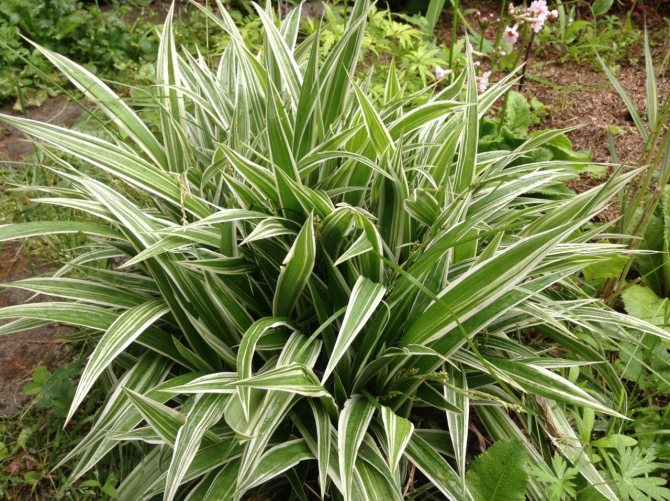

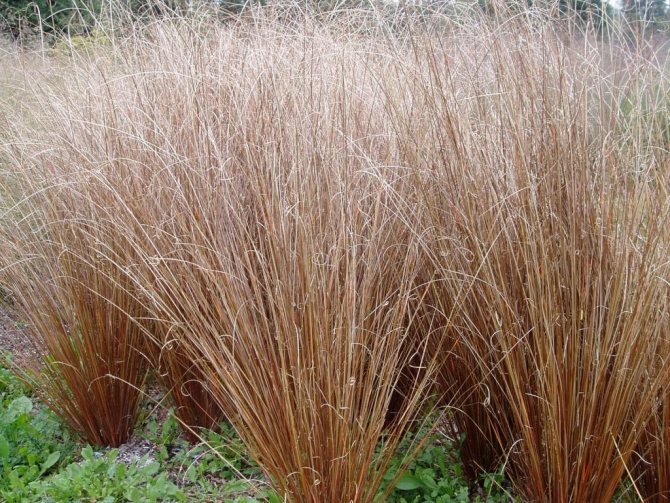
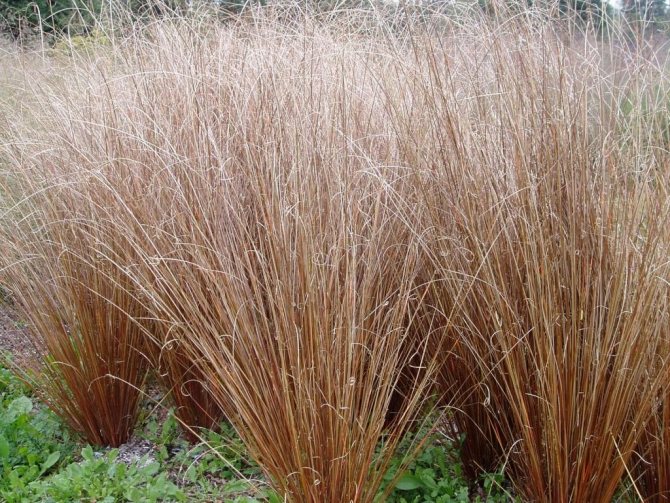
Plants with decorative leaves are considered to be less resistant than the original species. But a bad experience can be comprehended only with the ochimen sedge ‘Evergold’ (C. ochimensis ‘Evergold’), she did not survive the winter of 2002-2003. The rest of the variegated forms, fortunately, are still alive today.
One of the tallest species – drooping sedge (C. pendula)… It is a powerful plant that grows to a height of 1,2 m.
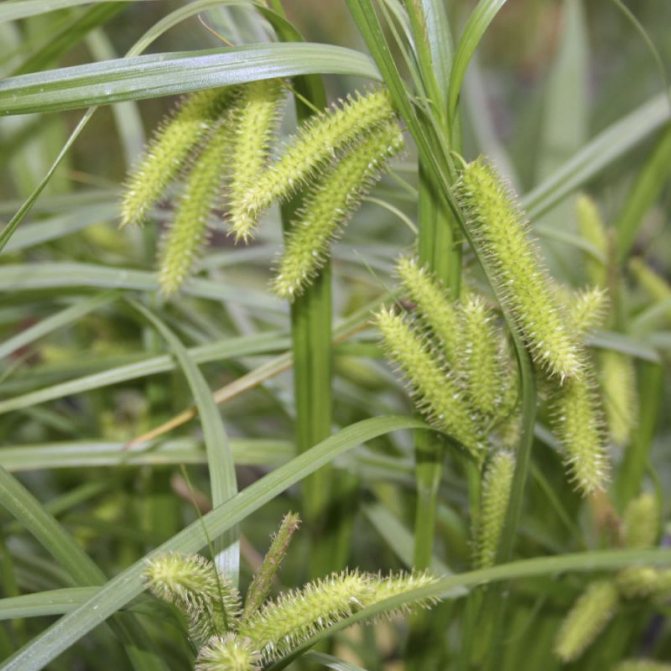

The main decoration of the sedge is the long hanging “earrings” -inflorescences. These sedges in landscape design last for a very long time. The plant is hygrophilous, its very place on the bank of the pond among other large plants – badans, buzulniks, host.
Palm-leaved sedge (C. muskingumensis) not so large. Shoots up to a meter in height form a tightly knit bush. An excellent plant for damp places (it can grow even in shallow water). The species has variegated forms and varieties. Also a dwarf variety – ‘Little Mildge’ was bred.
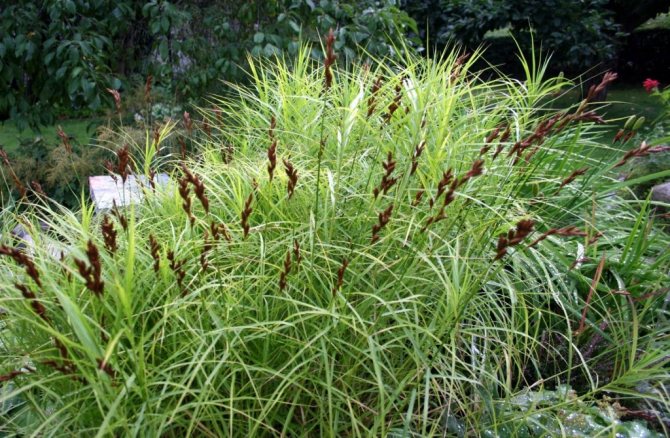
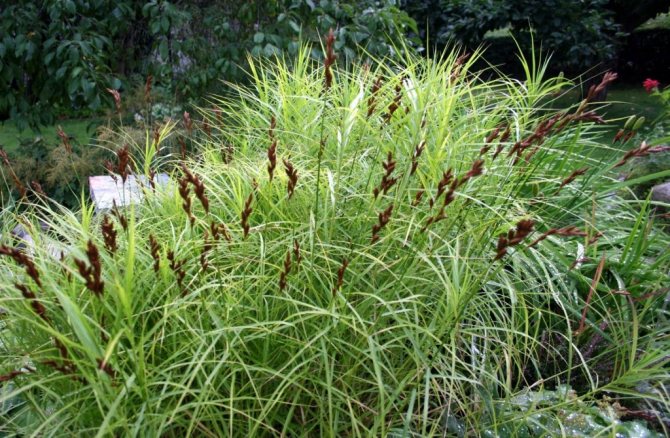

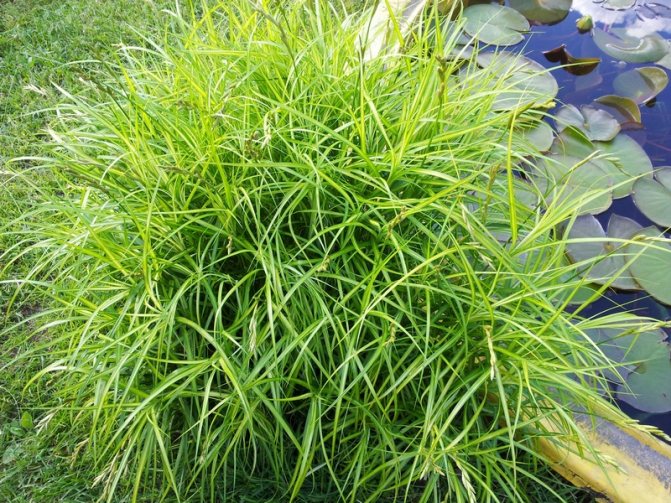
Evergreen species – Osaka Morrow (S. morrowii)… She winters great. From under the snow, the plant comes out not even crumpled. The plant forms a neat hummock up to 50 cm in height and slightly larger in diameter. It is better to plant this sedge in partial shade, so that the wintering leaves do not burn in the spring in the sun. The soil in the ornamental sedge garden should always be moist, but not wet. There are varigate varieties.




Winged sedge (C. elata) has not yet become widespread. The bright yellow variety ‘Aigea’ will draw attention to itself. The plant forms loose bushes up to 30 cm tall. This sedge species prefers humid places. Winters well. To preserve the bright color, the plant is planted in a bright place ….

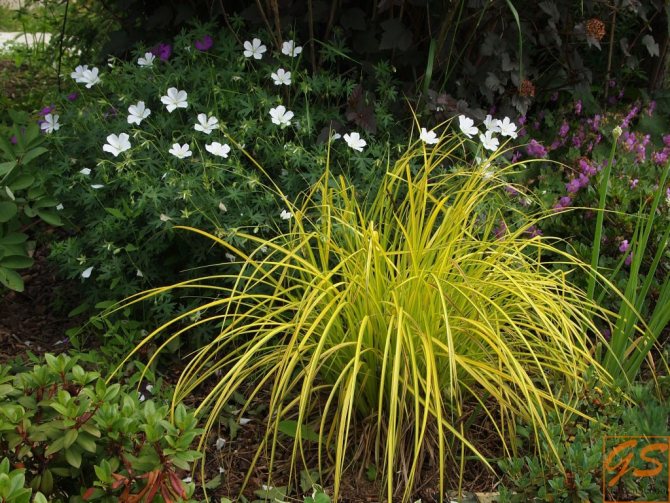
Mountain sedge (C. montana) forms dense squat (up to 35 cm) bumps. The leaves are thin. In early summer, the plant is decorated with black spikelets. From the name it is clear that dampness is contraindicated for this species. But she doesn’t like dry either.

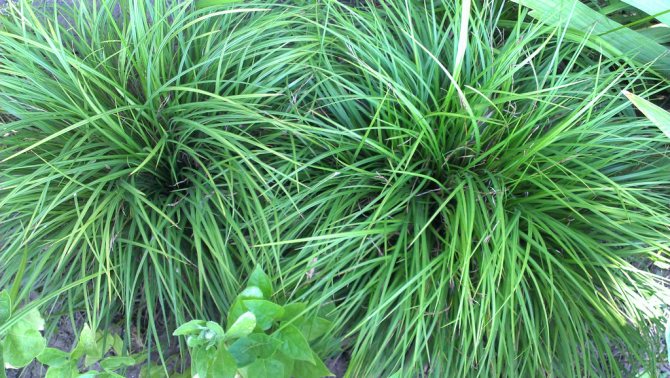
As shown in the photo, this type of sedge will decorate the shaded areas of the rock garden:
She is also good at curbs next to other low plants. Looks great in an array. Winters well.
Unlike the previous species, rust-spotted sedge (C. siderosticha) gradually spreads out, forming a curtain. In May, the plant blooms — numerous spikelets with pink anthers appear. Variegated varieties are less aggressive. A very flexible plant that can grow both in the sun and in the shade.
One of the smallest is the birdfoot sedge (C. ornithopoda). A bush with a height of only 10 cm, with beautiful long leaves that fit around the bump in curls. The variety ‘Variegata’ is very nice. The plant is evergreen. The leaves do not suffer from frost, but in the spring they can get burns. This sedge does not tolerate dampness and drought.
Ornamental sedge varieties are perfectly combined with geyher and hostas, they are good “at the feet” of ferns, next to mountain goats, bells, geraniums and cuffs. Low-growing species can be planted in a rock garden.
The palm-leaved sedge has very fragile shoots: as soon as you touch it, the stalks fall. Try not to plant it along paths or in places where the plant can be damaged.
Recently, sedges with brown leaves have appeared on the market. The bushes look luxurious. Only brick sedge (C. testacea) is kept. But she was grown from seed.
source
Evergreen paniculata sheep botanical description
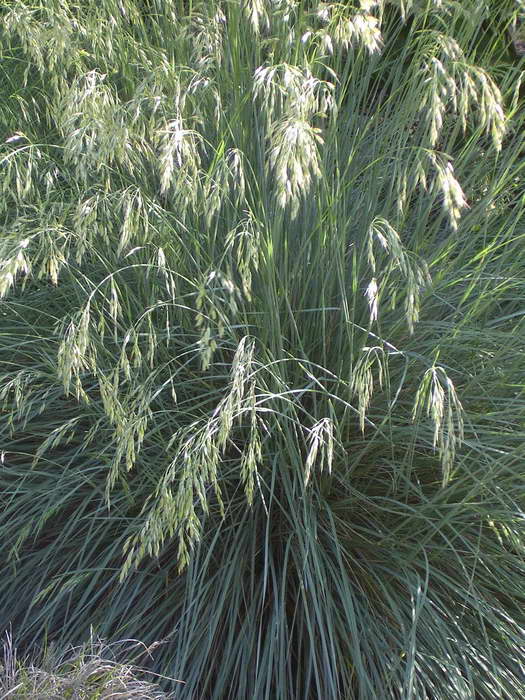
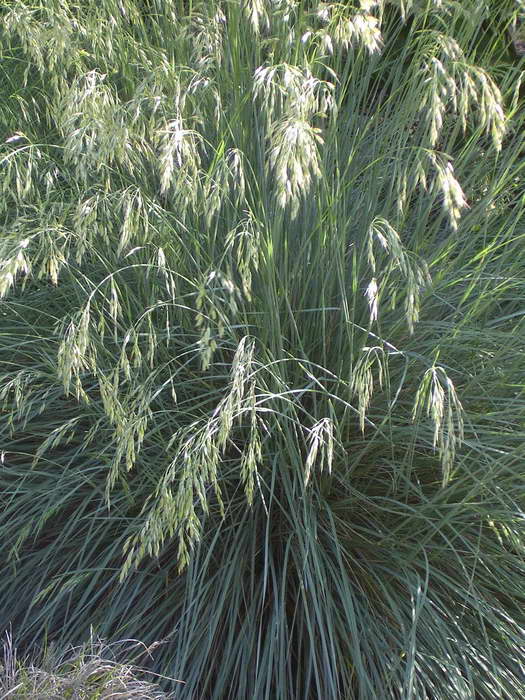
Panicled sheep blue photo
The root system is fibrous. The roots penetrate deeply into the soil in search of moisture and nutrients.
The height of the plant is 30-50 cm.If you provide suitable conditions and do not plant bushes, they can reach a diameter of about 1 m.
The leaf plates are linear, narrow: in the lower part, the width is about 1 cm, at the top they are equally narrowed, the tops are pointed. In length, the leaves are stretched to half a meter. Can be curled or folded lengthwise. The colors are green-blue or gray.
Paniculate inflorescences appear on the tops of erect peduncles up to 1,5 m long. They are soft, gray-green in color. Seemingly unpretentious, but towering above the bush, they give airiness. Flowering occurs in July.
Where grows
The homeland of this ornamental cereal is the Alps and the mountainous regions of the Western Mediterranean, it is distributed in the natural environment of Africa, Asia, and Europe.
Application
Wild species are used as livestock feed. Landscaping is the best use for this plant.
In regions with a warm climate, oat is decorative all year round. In a temperate climatic zone, the leaves do not dry out, but they wilt under the influence of snow and frost.
Thus, the decorative effect of the bush is preserved throughout the season. Combined with unpretentiousness to growing conditions (grows best on depleted soils, resistant to drought, strong and cold winds, frost), this makes oat a unique plant for the garden.
Literature [edit | edit code]
- Gubanov I.A. and others.
Helictotrichon pubescens – Fluffy sheep // Illustrated guide to plants of Central Russia. In 3 volumes – M .: T-in scientific. ed. KMK, Institute of technologist. issl., 2002. – T. 1. Ferns, horsetails, lyes, gymnosperms, angiosperms (monocots). – S. 252 .– ISBN 8-87317-091-6. - Lomonosova M.N.
Avenula pubescens – Fluffy sheep // Flora of Siberia = Flora Sibiriae: in 14 volumes / ed. L. I. Malysheva. – Novosibirsk: Science, Sib. otd., 1990. – T. 2: Poaceae (Gramineae) / ed. L. I. Malysheva, G. A. Peshkova. – S. 69-70. – 361 p. – 2900 copies. – ISBN 5-02-028948-5. - Probatova N.S.
Avenula pubescens – pubescent sheep // Vascular plants of the Soviet Far East: Arid, Horsetail, Fern, Gymnosperms, Angiosperms (Flowering): in 8 tons / hole. ed. S. S. Kharkevich. – L.: Science, 1985 .– T. 1 / ed. volumes by N.N. Tsvelev. – S. 155-156. – 398 p. – 2000 copies. – ISBN 5-02-026590-X. - Rozhevits R. Yu.
Avenastrum pubescens – pubescent sheep // Flora of the USSR: in 30 tons / ch. ed. V. L. Komarov. – L.: Publishing house of the Academy of Sciences of the USSR, 1934. – T. 2 / ed. volumes by R. Yu. Rozhevits, B. K. Shishkin. – S. 275-276. – 778, XXXIII p. – 5175 copies. - D. I. Tretyakov
Genus Avenula – Sheep // Flora of Belarus. Vascular plants. In 6 volumes / Under total. ed. V.I. Parfenov. – Minsk: Belarus. Navuka, 2013. – T. 2. Liliopsida (Acoraceae – Zannichelliaceae). – S. 195-197. – 447 p. – 500 copies – ISBN 978-985-08-1597-2. - Tsvelev N.N.
Subgenus Pubavenastrum // Cereals of the USSR / otv. ed. An. A. Fedorov. – L .: Nauka, 1976. – S. 248—249. – 788 p. – 2900 copies.
Breeding a sheep by dividing a bush
Dividing a bush is the most common breeding method. It is best to carry out the procedure in the spring (when planting in the fall, the bushes often get wet, which leads to death).
Moisten the soil well and dig out the bush. Damage to the root system is not terrible, you can even cut off the lower part of the rhizome. Rinse the rest in water, divide into parts, plant.
Subject to looseness, lightness of the soil and moderate watering, they will quickly take root and grow.
They practice this method: the bush is not completely dug out, but part of the bush is separated with a sharp shovel. But in this case, there is a risk that the main bush will start to hurt and lose its decorative effect.
Growing a sheep from seeds

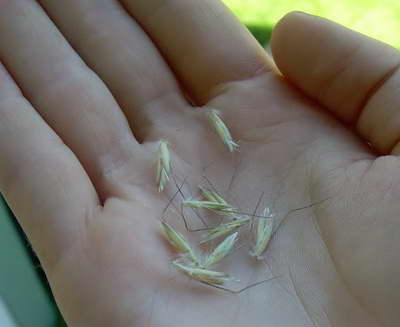
Sheep evergreen seeds photo
Sowing in the ground
Sowing oat seeds in open ground can be done in spring or before winter. Cover the seeds by 2-3 cm. The area should not be trampled. Also keep the soil moist. Thin seedlings, weed young shoots from weeds.
Self-seeding is possible: do not remove panicles with ripe seeds so that they are distributed around the bush. Only a few of them germinate. Transplant the hardened bushes from self-seeding to a new growth site.
Growing seedlings

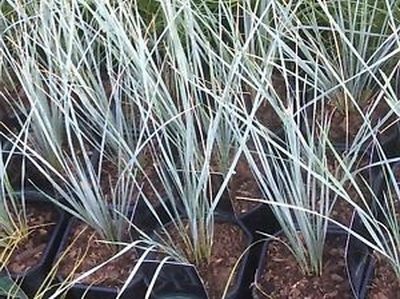
Evergreen sheep from seed photo seedlings
For reliability, sheep seedlings are grown at home. For this, it is better to use individual containers (peat pots, plastic cups), so that in the future, during transplantation, do not injure the weak roots of young shoots. A pick can lead to death – use the transshipment method when transplanting with full preservation of the earthen ball.
- Start sowing seedlings in early March.
- You will need nutritious soil, you can take a universal seedling substrate.
- Place 2-3 seeds in each container (then leave 1 sprout).
- Moisten crops, cover with cling film. Germinate in diffused light. Keep warm (about 25 ° C).
- With the appearance of entrances, remove the shelter.
- Continue with moderate watering and maintain good ambient lighting.
- A couple of weeks before transplanting into open ground, which is carried out with the establishment of real heat, start hardening the seedlings.
When transplanting, do not pull and pull the plant out of the pot. Water the seedlings well and let the soil damp. With the back of a knife, go over the inside of the pot to peel the soil from the walls, turn the container over on its side and carefully remove the seedlings. If they were grown in plastic cups, just cut them, with peat cups you can plant seedlings in the ground as a whole.
Site Selection
It is best to plant the plant in a sunny area.
The soil is required to be loose, light, without flooding and moisture stagnation. The nutritional value of the soil does not matter. On the contrary, shading in combination with the high fertility of the soil gives an undesirable result – the gray shade of the leaves is lost, they turn green.
He categorically does not tolerate heavy, damp soils. Under such conditions, the rhizome rots, which leads to the death of the plant.
Heavy soil must be diluted: for digging, add coarse sand, gravel. They will serve as drainage.
Planting and caring for sheep in the open field
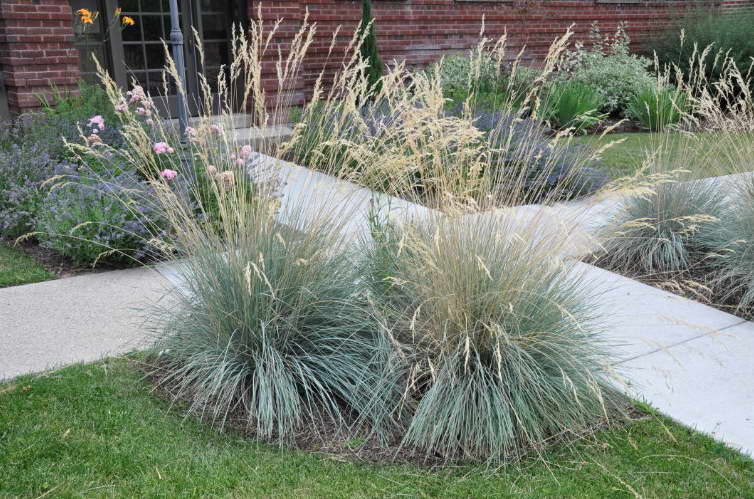
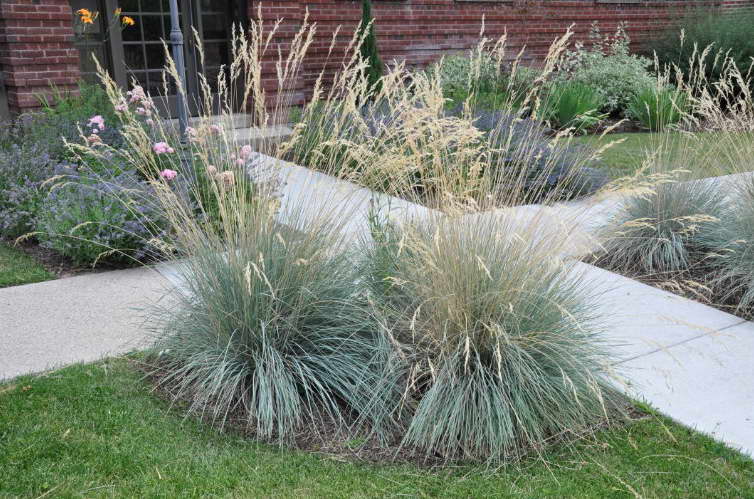
How to plant blue sheep in the open field
How to plant
The planting density is determined by the purpose of the bushes. On average, plant about 4 plants per square meter. To form a hedge, place it closer to each other, while maintaining a distance of about 1 cm. Sprawling fountains of sheep are also planted alone next to other shrubs or flowers, keep in mind that it can take a meter in diameter, but it is not at all aggressive. It grows well in one place for about 50 years.
Growing conditions
The ideal conditions for growing sheep will be close to the mountain climate. High humidity combined with high air temperatures have a detrimental effect on the plant. Sheep does not bloom well, the risk of rust damage increases.
Watering
The sheep tolerate drought well. If the soil is too dry, the tips of the leaves will dry out, new ones will develop slowly. Watering is required only during periods of severe drought. When doing this, add a moderate amount of water without making a swamp.
Feeding
There is no urgent need for top dressing, they can even harm. A small amount of complex mineral fertilizers can be applied after planting young plants. It is enough to carry out such a procedure in the future 1 time per season – in early spring. Better to apply in liquid form.
Wintering and pruning
Winters successfully in open ground without shelter.
For the first winter, the plant leaves without pruning. In the spring, the sheep’s “head of hair” does not look very decorative. White, dry leaves appear – grab them with your hand closer to the base and gently pull out. Then in the fall, the aerial part must be cut off at the root.
Transfer
After 3-4 years, the sheep grows, forming a wide clump. The bush looks unkempt – in the spring it will need to be divided into parts and planted. Cut off the panicles immediately after flowering, if you do not want self-seeding.
Ornamental sedge care
Planting and caring for ornamental sedge in the garden does not require much work and even a novice gardener can do it. It is necessary to adhere to several simple rules for caring for this plant and do not forget that sedge is a fast-growing species, and therefore can displace other flowers from the flower bed in a relatively short time:
- in order for the bush to look neat, dry leaves must be cut in spring, this is especially true for evergreen species;
- lush bushes need to be thinned regularly. To do this, safely cut off the excess part of the bush with a garden shovel and do not worry – the sedge will recover very quickly;
- summer-green sedge species in spring must be cut at the root;
- in early spring, sedge must be fertilized with compost;
- in hot seasons and in drought, sedge requires regular and abundant watering;
- sedge reproduces by dividing the bush.
Sedge belongs to frost-resistant plants, but still, there are several varieties that require special care and protection in winter. These include, first of all, the group of New Zealand sedge varieties. They are quite thermophilic, therefore, on the eve of winter, they must be planted in tubs and hidden in the room. The sedge Buchananii Viridis, which has a pale green leaf color, also requires shelter in winter.
Whatever types of decorative sedge you choose – from the most common and ordinary to rare exotics, all of them, with a little time and labor, will become a worthy decoration of your garden, artificial reservoir or flower garden.
Types of sheep with photos and names
Evergreen or viviparous sheep, blue, panicle Helictotrichon sempervirens
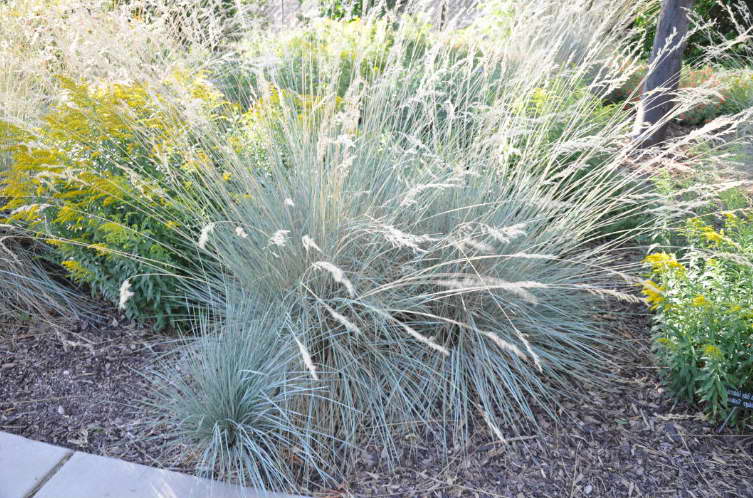

Evergreen blue sheep Helictotrichon sempervirens photo
The bluish color and high growth are the advantages of this species, in fact, the most unique herb of its kind. There are simply no taller blue herbaceous plants. The root rosette of narrow sharp leaves diverges radially in the form of a ball, up to 30-50, sometimes 100 cm high. During flowering, together with spikelets, the plant reaches a height of 1,5 m. Spikelets appear in the month of July and decorate the garden until autumn.
Desert sheep Helictotrichon desertorum

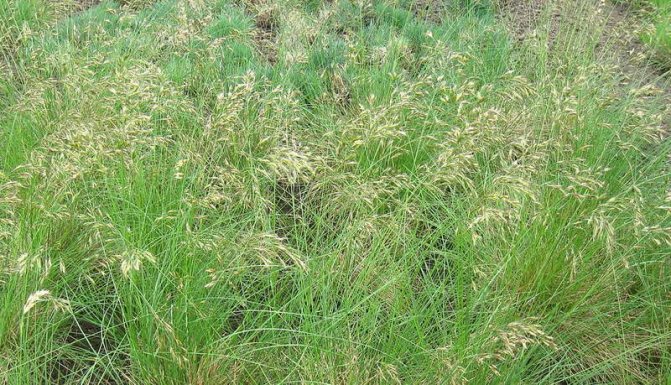
Desert sheep Helictotrichon desertorum photo
A low grass up to 30 cm with a dense armful of narrow thin leaves and paniculate spikelets with large beige-brown grains.
Ornamental grasses, grasses and sedges in garden design.
Despite the lack of flowers, ornamental grasses, sedges and grasses in the garden are irreplaceable – they favorably set off the splendor of flowering plants, give the site a decorative look and can serve as an excellent background supplement for bright accents. Most of such crops do not require annual renewal, since they are perennial and successfully survive adverse conditions even in the most severe winters.
Plants with narrow gramineous leaves (sedges, grasses, liliaceae) belong to different families, but the external similarity allows, without going into botanical subtleties, to call them ornamental grasses.
On this page you can find photos, names and descriptions of sedges, cereals and other ornamental herbs for decorating the garden.
Types of perennial ornamental grasses and herbs in landscape design
Ophiopogon planiscapus Is truly a royal plant. The variety ‘Nigrescens’ with black leaves strikes with an exotic appearance. If you place a decorative ball near the bush, this grass will resemble a porcupine with long games.
Pay attention to the photo – in this perennial ornamental herb for the garden, the leaves retain their color even in partial shade:
Ophiopogon blooms in August-September. The spectacle is magnificent – as if a lilac lily of the valley happened to be among the black sedge. It is easy to propagate the plant: after taking root, the “black grass” begins to grow with the help of underground stolons and, accordingly, form new bumps.
Do not forget that ophiopogon comes from regions with a milder climate and can freeze out in severe winters without snow. Mulch and shelter made from bark or fallen leaves will come in handy. You cannot cut the leaves of ophiopogon for the winter. It is an evergreen plant.
Another fashionable plant – мискантус (Miscanthus)… New varieties appear every year.
Chinese miscanthus (M. sinensis) pleases with a special variety. This type of ornamental grasses forms powerful multi-stem shrubs from 40 cm to 2 m in height. The leaves are beautifully colored – can be bluish-green, with transverse or longitudinal bright stripes. The flowering of miscanthus is very impressive. But in our climate, elegant fluffy panicles can only be seen in ‘Early Hybrids’. Other varieties lack the growing season for full flowering.
Miscanthuses can grow in the sun or in partial shade, they like loose nutritious soils. Occasionally they need to be fed.
Beautiful photographs taken in overseas gardens bring an Asian cereal with an unpronounceable name into vogue. Hakonechloa large (Hakonechloa macra).
Curtains with such decorative grasses and herbs in landscape design, thanks to drooping leaves, look simply amazing. Especially effective are yellow-leaved and variegated varieties.
In the gardens of the middle lane, haakonehloe, which is called the weeping grass because of drooping leaves in Japan, lacks warmth: lush bumps do not work. In the harsh snowless winters, hakonekhloya freezes out. It can only be recommended for cultivation in the southern regions. The plant is planted in shady, humid places.
But рейграс (Arrhenatherum) tall bulbous subspecies ‘Variegatum’ (A. elatius ssp. bulbosum ‘Variegatum’) and winters and grows well with us.
It forms delicate loose bushes with very bright contrasting foliage. Bulbs are formed in the stalks, which fall on the soil and give life to new plants. This ornamental grass is ideal for landscaping: Reygrass is non-aggressive, indifferent to drought, looks better in the sun, where it gets brighter.
Nowadays, cereals with gray foliage are very popular. The first among them – evergreen oats (Elelictotrichon sempervirens).
Forms charming bluish-blue bushes up to the knee. Loves the sun (in full light it acquires a bright color), light soils and relative dryness.
His “younger sister” – sizzling oatmeal (Festuca glauca).
Fescue leaves are thin as needles. A neat bump with brightly colored leaves is formed only when planted in a sunny place, in dry, well-drained soil. In frosty and damp winters, the plant may die….
Щучка дернистая (Deschampsia caespitosa) – a simple, unpretentious plant.
At first glance, nothing special. However, this ornamental grass is very good at design among the stones on the side of the pond. It forms neat, rounded bushes. Recently, varieties with different coloration of spikelets have appeared….
Very popular blue lightning ‘Variegata’ (Molinia caerulea ‘Variegata’)… Its bluish leaves with longitudinal white stripes are brighter in the sun. But in the shade, the lightning grows pretty well and pleases the eye. Loves moisture and coolness. Otherwise, no problem.
As you can see in the photo, these ornamental grasses and cereals for the garden can be planted next to roses, geyher, geraniums, hosts, badans, aquilegia and cuffs:
All these plants will get along well together. It is also a good plant for planting spring bulbs.
Chinese miscanthus winter well. You just need to remember that it is better not to cut them for the winter. In the spring, they wake up late, which makes it seem that the plant is inanimate.
Types and varieties of decorative sedges in landscape design (with photo)
Decorative osoki (Sageh) are remarkable for their plasticity. They perfectly adapt to different conditions and feel comfortable in almost all gardens: they grow in the sun (just remember about watering) and in the shade, both in dry and damp areas. There are variegated and yellow-leaved sedges. Look at the photo – decorative sedges enliven shady corners, create a contrast with plants with dark leaves:
Plants with decorative leaves are considered to be less resistant than the original species. But a bad experience can be comprehended only with the ochimen sedge ‘Evergold’ (C. ochimensis ‘Evergold’), she did not survive the winter of 2002-2003. The rest of the variegated forms, fortunately, are still alive today.
One of the tallest species – drooping sedge (C. pendula)… It is a powerful plant that grows to a height of 1,2 m.
The main decoration of the sedge is the long hanging “earrings” -inflorescences. These sedges in landscape design last for a very long time. The plant is hygrophilous, its very place on the bank of the pond among other large plants – badans, buzulniks, host.
Palm-leaved sedge (C. muskingumensis) not so large. Shoots up to a meter in height form a tightly knit bush. An excellent plant for damp places (it can grow even in shallow water). The species has variegated forms and varieties. Also a dwarf variety – ‘Little Mildge’ was bred.
Evergreen species – Osaka Morrow (S. morrowii)… She winters great. From under the snow, the plant comes out not even crumpled. The plant forms a neat hummock up to 50 cm in height and slightly larger in diameter. It is better to plant this sedge in partial shade, so that the wintering leaves do not burn in the spring in the sun. The soil in the ornamental sedge garden should always be moist, but not wet. There are varigate varieties.
Winged sedge (C. elata) has not yet become widespread. The bright yellow variety ‘Aigea’ will draw attention to itself. The plant forms loose bushes up to 30 cm tall. This sedge species prefers humid places. Winters well. To preserve the bright color, the plant is planted in a bright place ….
Mountain sedge (C. montana) forms dense squat (up to 35 cm) bumps. The leaves are thin. In early summer, the plant is decorated with black spikelets. From the name it is clear that dampness is contraindicated for this species. But she doesn’t like dry either.
As shown in the photo, this type of sedge will decorate the shaded areas of the rock garden:
She is also good at curbs next to other low plants. Looks great in an array. Winters well.
Unlike the previous species, rust-spotted sedge (C. siderosticha) gradually spreads out, forming a curtain. In May, the plant blooms — numerous spikelets with pink anthers appear. Variegated varieties are less aggressive. A very flexible plant that can grow both in the sun and in the shade.
One of the smallest is the birdfoot sedge (C. ornithopoda). A bush with a height of only 10 cm, with beautiful long leaves that fit around the bump in curls. The variety ‘Variegata’ is very nice. The plant is evergreen. The leaves do not suffer from frost, but in the spring they can get burns. This sedge does not tolerate dampness and drought.
Ornamental sedge varieties are perfectly combined with geyher and hostas, they are good “at the feet” of ferns, next to mountain goats, bells, geraniums and cuffs. Low-growing species can be planted in a rock garden.
The palm-leaved sedge has very fragile shoots: as soon as you touch it, the stalks fall. Try not to plant it along paths or in places where the plant can be damaged.
Recently, sedges with brown leaves have appeared on the market. The bushes look luxurious. Only brick sedge (C. testacea) is kept. But she was grown from seed.
Decorative varieties of sheep
By the appearance of the leaf plates, the decorative varieties of Heliktotrichon differ little, but have other individual characteristics.
Pendula – meter-high flower stalks end in weighty drooping panicle inflorescences. The leaf plates combine shades of green, gray and blue.
Saphir Sprudel – leaves are distinguished by a bright gray-blue tint. Another notable feature is the silvery glossy inflorescences.
Robust – the appearance is typical. The variety is distinguished by its resistance to diseases: even in the most unfavorable conditions, it is not affected by rust.
Sheep in landscape design

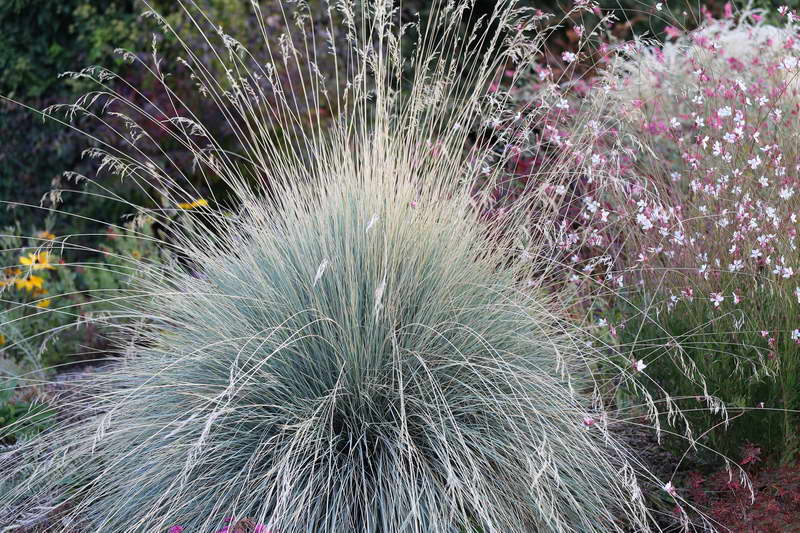
Blue sheep in landscape design photo
Evergreen oat especially reveals its beauty in the autumn garden: the bluish color looks refreshing against the background of the yellow-red palette of the season. Retains decorativeness when ordinary plants and flowers have already departed.
Green and blue fountains look spectacular against the backdrop of variegated trees and bushes.
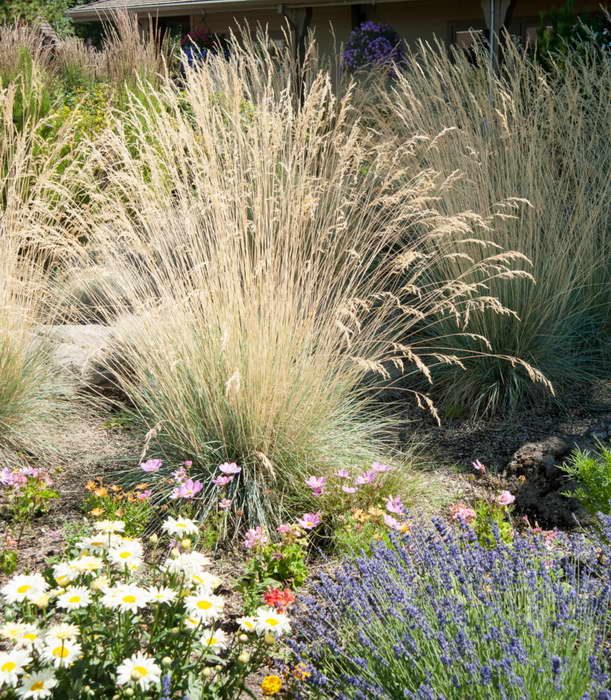
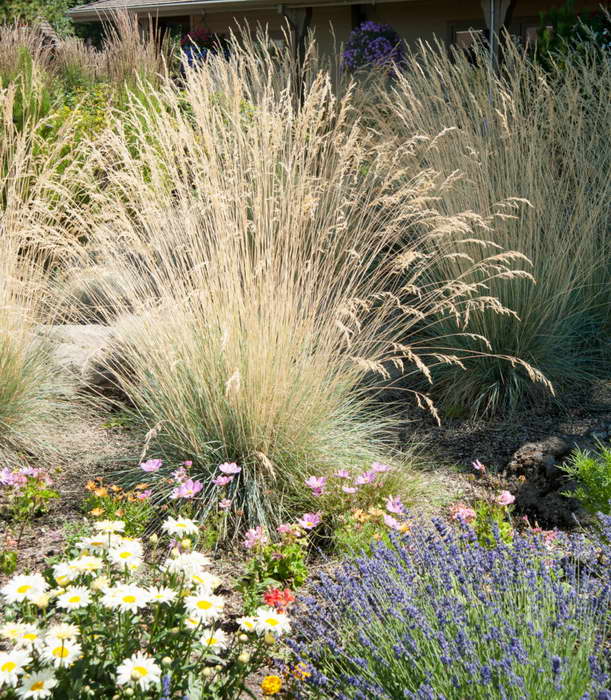
Sheep in garden design photo
Among flowering crops, good partners will be lavender, salvia, leucanthemum, sedum, phlox, bells, irises, saxifrage. The bluish shade of the sheep will only emphasize their attractiveness.
Plant in rockeries, mixborders, on alpine slides, frame artificial reservoirs. Thin leaves sway from the wind, giving any composition volume, dynamics and at the same time lightness.
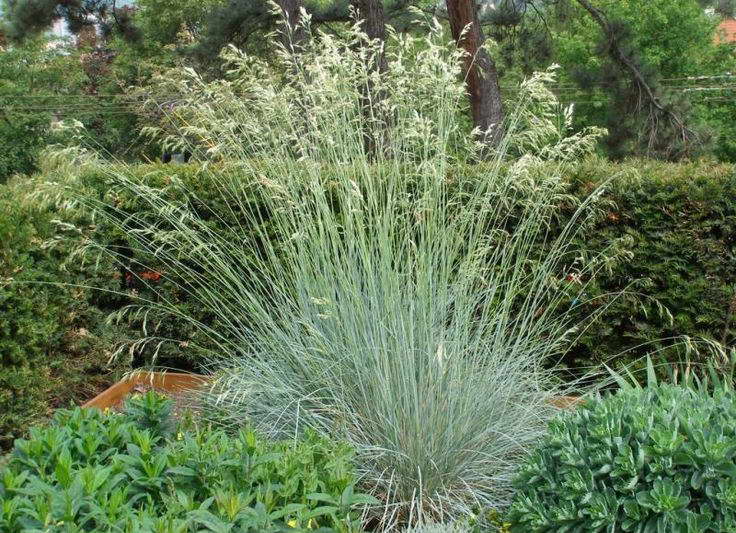

Evergreen sheep on a photo flowerbed
Create monoclumbars. Combine with other decorative cereals (the most colorful combination is with those that acquire yellow, red shades in autumn). Choose also in height and shape – play with contrasts.

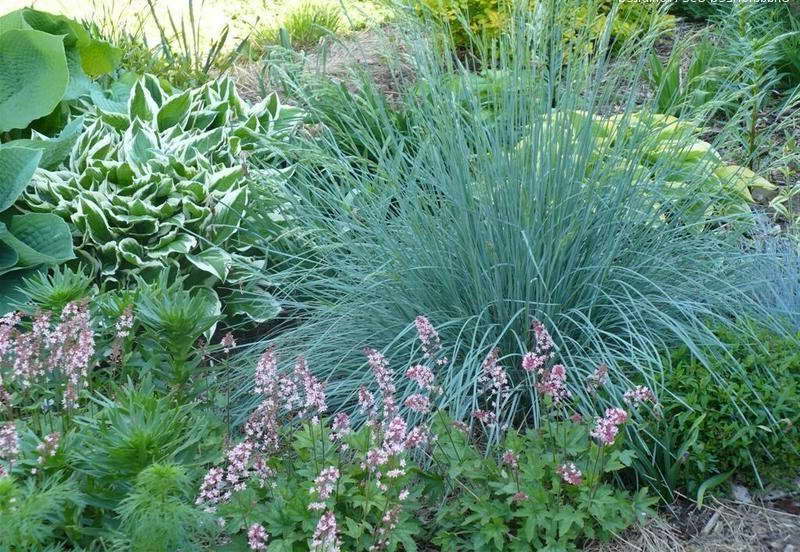
Blue sheep with variegat hosts on a flowerbed photo
A hedge made of sheep looks spectacular. Without much effort, the composition will delight at least 3 years.

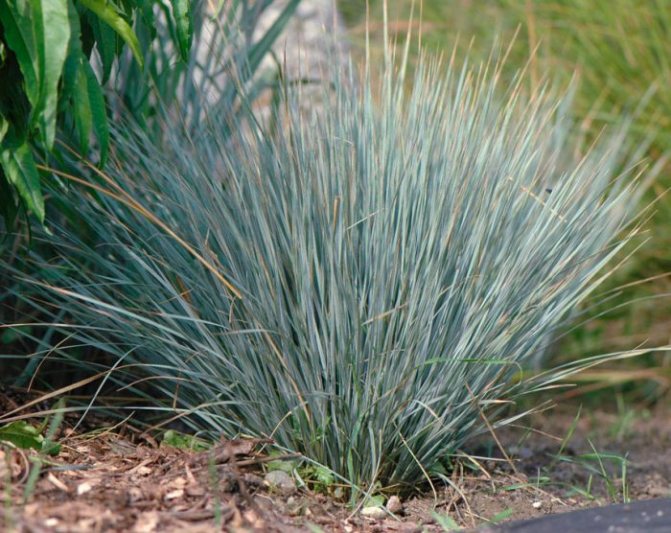
Herbaceous perennial oat (Helictotrichon) is a member of the Bluegrass or Cereals family. According to information taken from various sources, this genus unites 40–90 species. The scientific name of such a plant was formed from a pair of Greek words, translated as “twisted hair”, this is due to the fact that the awns of the colored scales in the lower part are twisted. In the wild, sheep can be found in Eurasia (but not in regions with a tropical climate), but also in South and North Africa. In the Asian and African tropics, this culture is found in the highlands. Without exception, all types of oat are fodder grazing plants, but since its foliage is very tough, it is rarely used as feed for livestock. Evergreen oats, or white oats, or viviparous oats (lat.Helictotrichon sempervirens = Avena cand>
Plant in landscape
Sheep looks spectacular among the autumn garden of yellowed and reddened foliage. The plant retains its decorative function even when the rest of the flowers have withered and withered. It is often combined with phlox, irises, lavender. A beautiful combination is obtained if you plant a salvia or saxifrage next to it. The long gray leaves of the sheep plant set off the natural beauty of the flowers.
It is used to decorate alpine slides, artificial ponds, mixborders. Light leaves give airiness and lightness to the created compositions. It is possible to design a monoclumb oat plant or to combine it with other cereals. Another option is a sheep hedge. It will retain its decorative appearance for up to three years.
Popular: Growing shrub amorphous in landscape design
Now reading:
- Three methods of reproduction and transplantation of the dollar tree
- Choosing cucumbers for open ground according to your preferences
- Beautiful flowering of epiphyllum after planting in a pot
- Description of 12 types of late varieties of cabbage for planting
About the author: Vladimir Petrovich Efremov
Chief agronomist of the Limited Liability Company “Association of Peasant (Farming) Farms” Kuznetsovskaya “”, Ilovlinsky District of the Volgograd Region.
Features of the sheep
Evergreen sheep is the tallest herbaceous perennial plant, the height of which can vary from 30 to 100 centimeters. The bush can grow up to 100 centimeters wide. The root system of such a sheep is fibrous and lies relatively deep. Narrow erect leaf plates of a linear shape reach 50 cm in length, they form a lush hummock. Their color ranges from gray-blue to green-gray. The stem reaches a height of about 1,5 m, on it there are narrow greenish-gray paniculate inflorescences, reaching from 40 to 100 mm in length. Bloom is observed from July to August. This species is distinguished by winter hardiness, and it is highly decorative, in this regard, it is very often used in gardening and in landscape design.
Sheep plant – description
Evergreen sheep is the tallest herbaceous perennial, reaching a height of 30 cm to 1 m. In width, it can also grow up to 1 m. The fibrous root system of the plant lies deep. Oat leaves forming a dense mound, narrow, linear, erect, up to half a meter long, colored in a range of shades from gray-green to blue-gray. Narrow gray-green paniculate inflorescences 4-10 cm long are formed on a stem up to 150 cm high. This cereal blooms in July-August. Evergreen sheep has frost resistance and high decorative characteristics, thanks to which it is widely used in landscape design and gardening.
Planting sheep in open ground
Rules of landing
Gardeners prefer to propagate the oat by dividing the bush, which is a quick and easy way. If there is no such cereal in your garden yet, then you can grow it from purchased seeds. They are sown directly into open soil in spring, while they need to be buried in the ground only 20 mm. It is quite easy to care for the seedlings of this plant. They need to be watered, if necessary, and sometimes shallowly loosen the soil near the plants. The grown seedlings must be planted so that they are more spacious. When transplanting, the plant is taken with a large clod of earth.
If desired, oats can also be grown through seedlings. Sowing of seeds is carried out at the beginning of the spring period. For this, individual pots are used, because by replanting or diving plants from a common box, you can easily damage their root system. When the seedlings get stronger, they must be transplanted into open soil; it is recommended to do this by transshipment. To do this, first, the seedlings are watered abundantly, then they take a knife and hold it with its back side between the substrate and the walls of the container along the entire depth. As a result, the soil mixture will separate from the walls of the pot. After that, the container is laid on its side and the bush is carefully removed from it along with the soil mixture. Then it is placed in a hole, which must be prepared in advance. The free space in the hole is covered with soil. It is forbidden to pull or pull the plant during transplantation.
A well-lit open area is suitable for growing such a crop. It will be very good if it will be located in the southern part of the garden. It is recommended to plant no more than 1 bushes on 4 square meter of the plot. When creating a hedge from a sheep during planting, a distance of 0,4–0,5 m is observed between the bushes. With a single planting of such a plant, the distance between the planted bushes should be slightly larger. Moderately dry and loose soil is optimal for growing sheep, but it should be infertile. Such a crop will not grow normally on fertile and moist soil, and shaded areas are also not suitable for it. If you plant a sheep in the shade, then its foliage will lose its decorative effect, as it will just turn green.
Caring for a sheep in the garden
When grown in regions with a temperate climate, such a plant does not need to be watered, even on hot and dry summer days. This species is adapted to the mountain climate, therefore, if high humidity is observed on hot days, this will have an extremely negative effect on flowering. It is necessary to water the sheep only when there is a prolonged drought, because due to a lack of water, new foliage will stop growing at the bush, and the old one will begin to dry out.
To preserve the decorative effect of such a plant, it does not need to be fed often. 7 days after planting the bush in open soil, it must be fed using a small amount of fertilizer. After that, fertilizing is carried out 1 time per season with mineral complex fertilizer.
Wintering
When the flowering of this plant comes to an end, the inflorescences that have lost their effectiveness must be removed. Such a cereal will not need shelter for the winter. During the first winter period, the color of the bush does not change and remains greenish-blue. In springtime, discolored leaf plates can be found in lush foliage, they look like gray strands. In order for the plant to become attractive again, these leaves need to be pulled out, while trying to grab with your hand as close as possible to the base of the plate. When the third winter is over, the plant will need to be rejuvenated.
Sheep breeding
Such a cereal is propagated by dividing the bush and seeds. You can read about the seed propagation method above. When the third winter is over, the bush will lose its former beauty, so it will need to be removed from the ground, divided into parts and planted. This procedure is carried out in the spring. If the bush is transplanted or divided in the fall, then it will be very weak, and if a wet winter comes out, then there is a high probability that rot will appear on the plant. Three-year-old bushes tolerate division and transplantation well.
Pests and diseases
The sheep has a very high resistance to all pests. If the summer period is hot and damp, and the soil in the area where such a cereal grows is poorly drained, then there is a high probability that the root system of the bush will be affected by a fungal disease, and rot may appear on it in winter.
If the weather is hot and the humidity is high, then because of this flowering, the oat becomes very scarce, while at the end of the summer period the bush can get rusty. In order to prevent this disease for growing cereals, it is recommended to choose those areas that are very well ventilated. Bushes affected by rust should be sprayed with a fungicide, for example, Bordeaux liquid.
If the root system decays, then the bush will need to be removed from the ground, and then all the affected areas are carefully cut out. Places of cuts must be sprinkled with crushed coal. After that, the plant is planted in a different place, while it should be borne in mind that it will need very good drainage.
Description and lifestyle
Desert Narrow Gap (Breviceps macrops) – a medium-sized (40-60 mm long) species of narrow-bore, with a narrow range and a diminishing number. It is painted in yellowish-brown tones to match the color of the environment. On the back of this frog, small spots are clearly visible, the location and size of which are individual for each individual. Outwardly, these are typical African narrow-legs with a rounded body, short head and small limbs. However, unlike other types of narrow-necked, it has very large eyes and thick webbed paws, similar to shovels. The latter are a digging device. The desert narrow-loop spends most of the time in the holes dug by it, leaving there only in the dark.
Types and varieties of sheep with photos and names
The most popular among gardeners are the following types of sheep:
Desert sheep (Helictotrichon desertorum)
This steppe species is European-West Asian. In several regions of the Russian Federation, this species is included in the Red Book and is considered endangered. Such oat is a dense sod herbaceous perennial plant. The height of the bush can vary from 0,2 to 0,5 meters. The leaves of such a plant are folded lengthwise. Narrow paniculate inflorescences consist of 2 or 3 spikelets, which reach about 1,4 centimeters in length. The fruit of the sheep is the same as that of other representatives of the Cereals family, namely, the caryopsis. This species is cultivated relatively infrequently and, as a rule, it is grown as an experimental plant.
Fluffy sheep (Helictotrichon pubescens), or pubescent sheep
Under natural conditions, this type of sheep can be found in the Caucasus, in the European part of Russia, in Europe, Central and Asia Minor, as well as in the southern part of Siberia, while it prefers to grow in meadows, meadows and steppes. The height of the bush varies from 0,3 to 1,2 meters. The rhizome is short. As a rule, leaf plates are covered with dense short hairs, leaf width is 0,4–1 cm. The length of the paniculate inflorescences is about 15 centimeters, they include two to four-flowered greenish (found with a stripe of violet color) spikelets, the length of which is 1,2–1,7 centimeters. This fodder plant is capable of producing a rich harvest if grown in an irrigated or flooded meadow. When grown on dry soil, the foliage of the bushes becomes very tough and strongly pubescent.
Evergreen sheep
A description of this type can be found at the beginning of the article. Gradually, the popularity of this species among gardeners and breeders is steadily growing. Popular garden varieties:
- Pendula – drooping and heavy flower ears of a bush;
- Robust – has a very high resistance to rust, even in damp summers;
- Sapphiresprudel – the plant is resistant to rust, the foliage is painted in a rich bluish-gray color, a cascade of spikelets of a silvery color is formed near the bush.
Notes
- For the conventionality of indicating the class of monocots as a superior taxon for the group of plants described in this article, see the APG Systems section of the Monocotyledons article.
- ↑ 12
Genus information
Helictotrichon
(English) in the database
Index Genericorum
International Association for Plant Taxonomy (IAPT). - ↑ 1234
Tsvelev, 1976. - List of species of the genus Helictotrichon
Besser.
World Checklist of Selected Plant Families (WCSP)
… Royal Botanic Gardens, Kew. Retrieved June 30, 2020. - Species of the genus Helictotrichon
according to the resource The Plant List.

